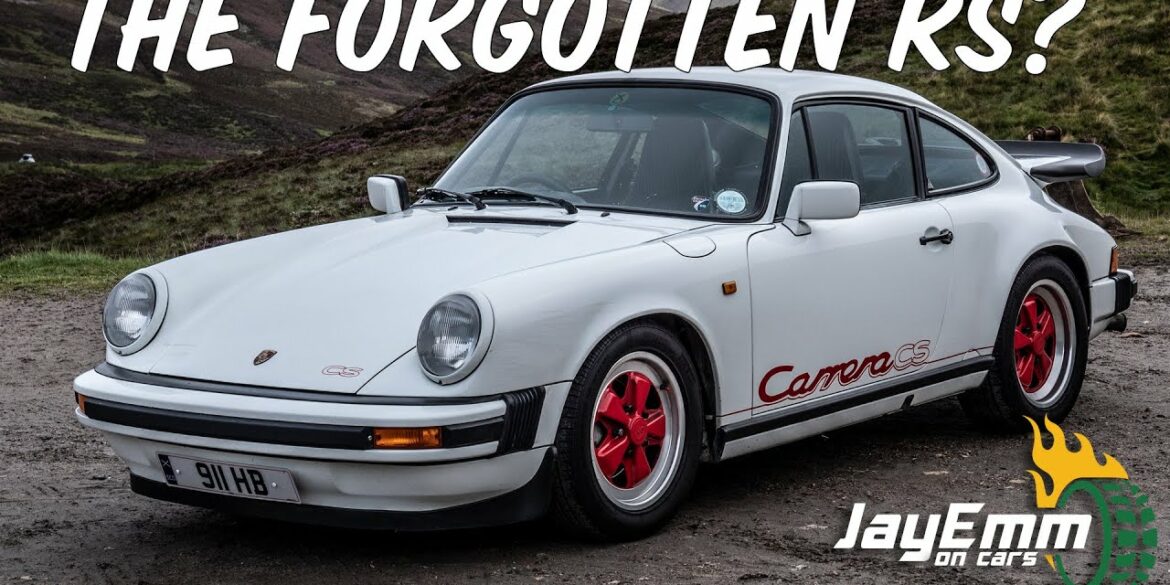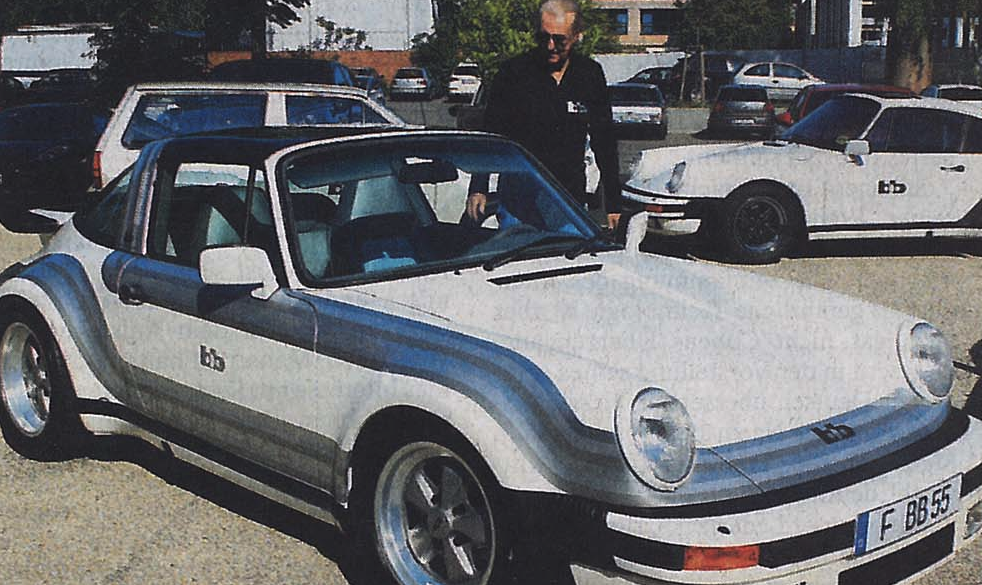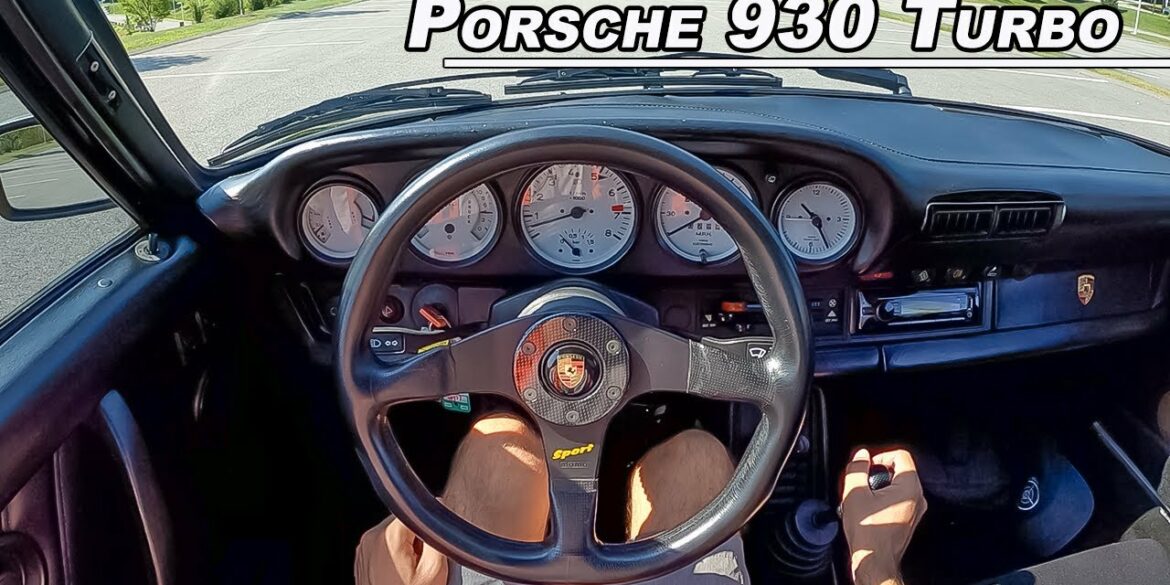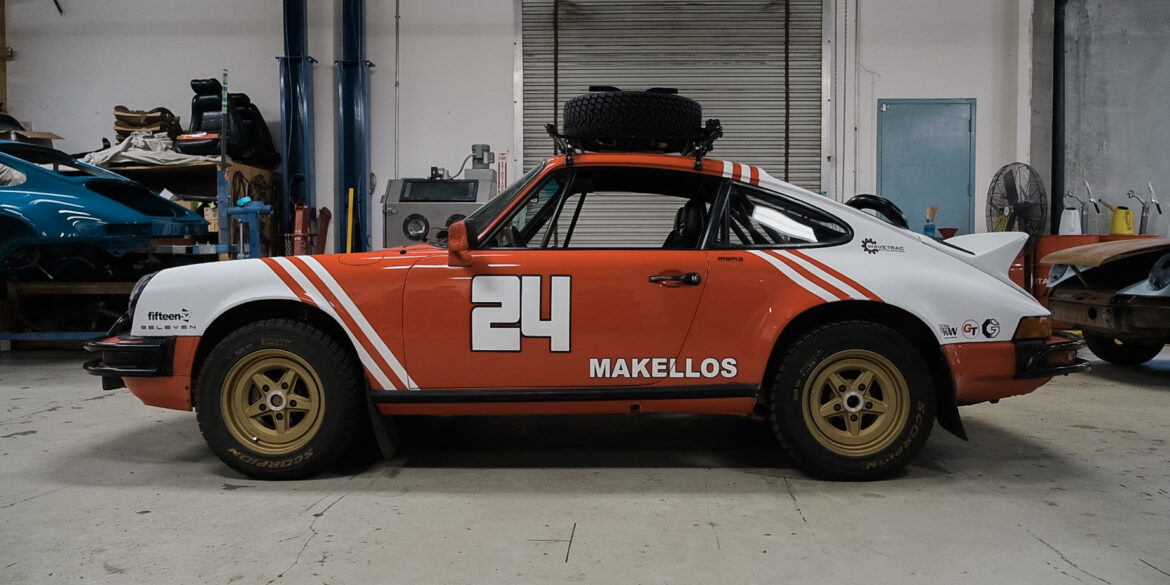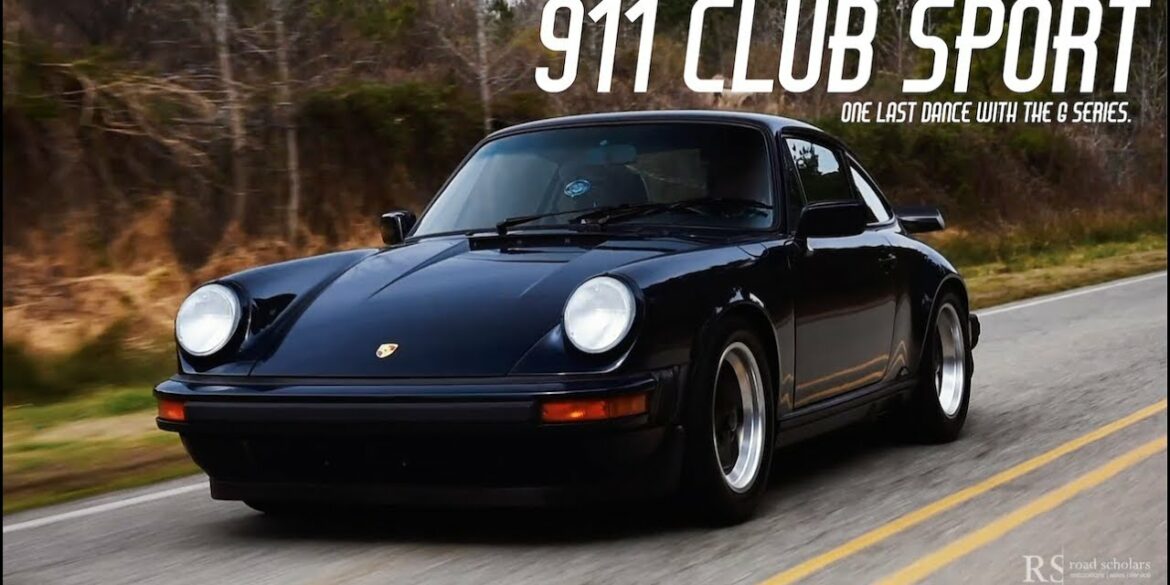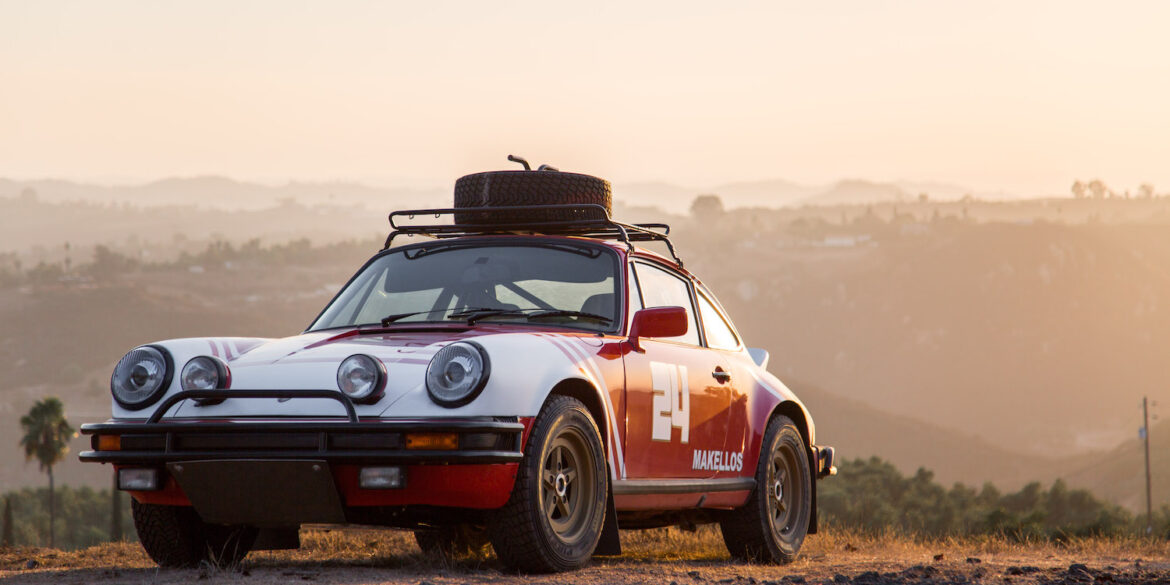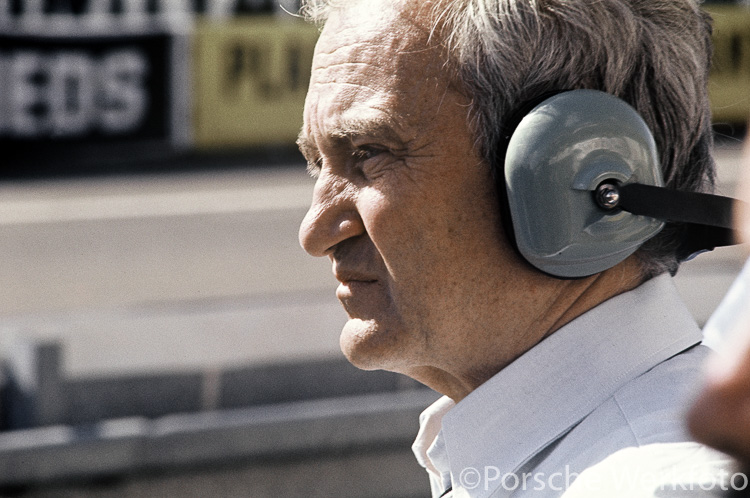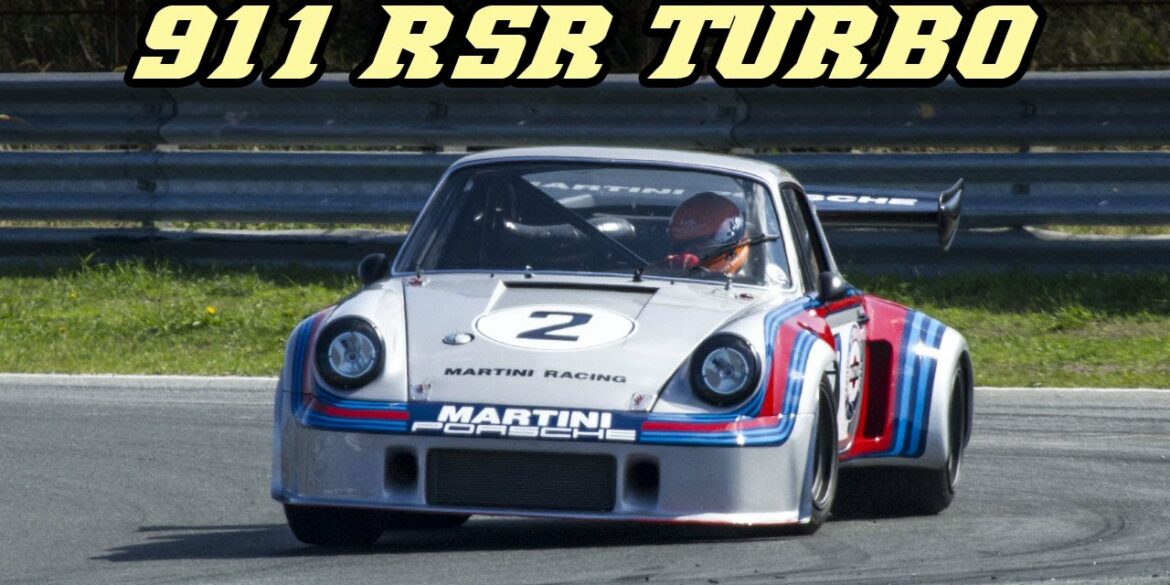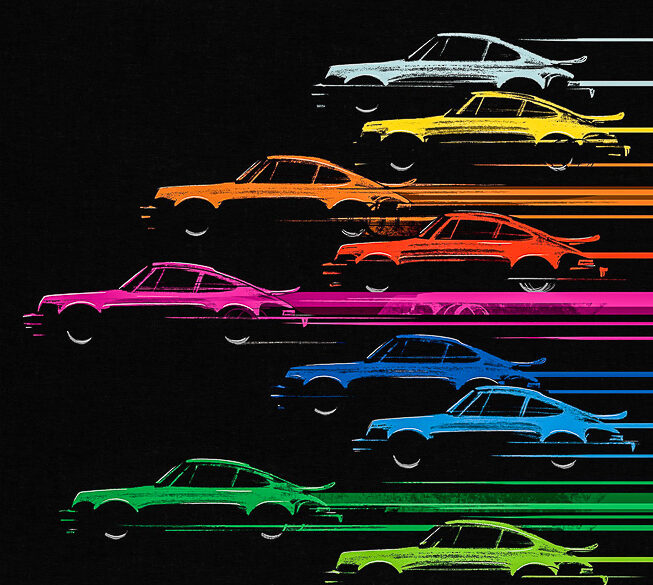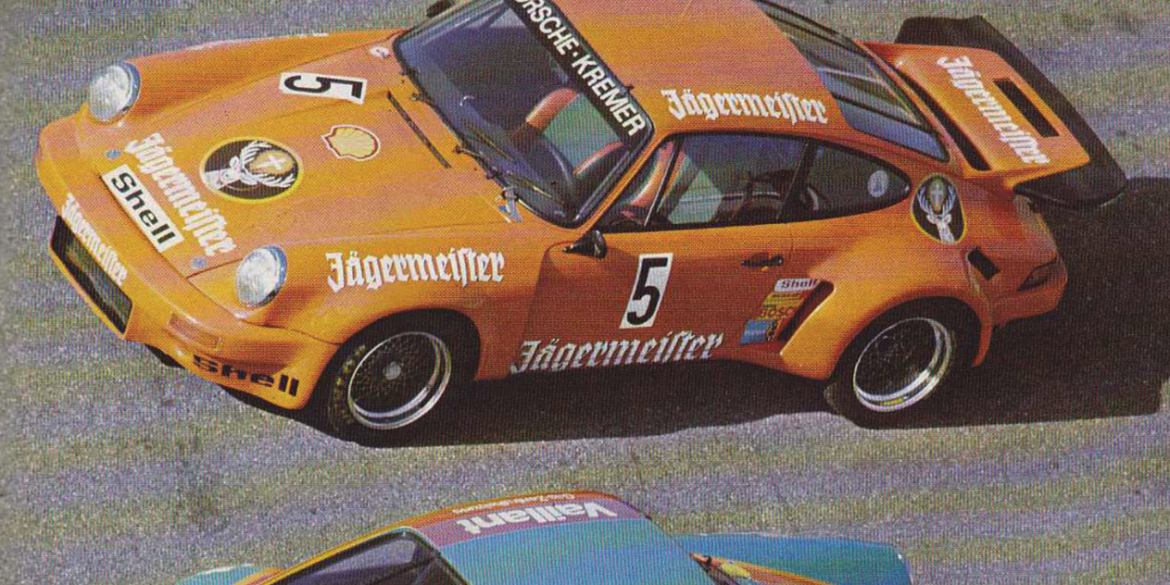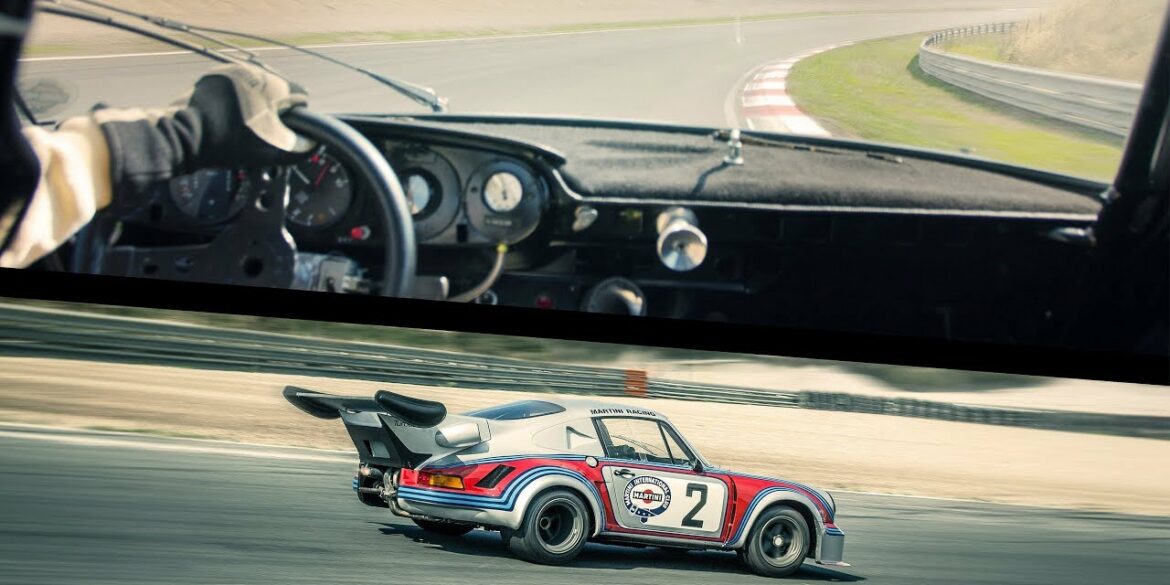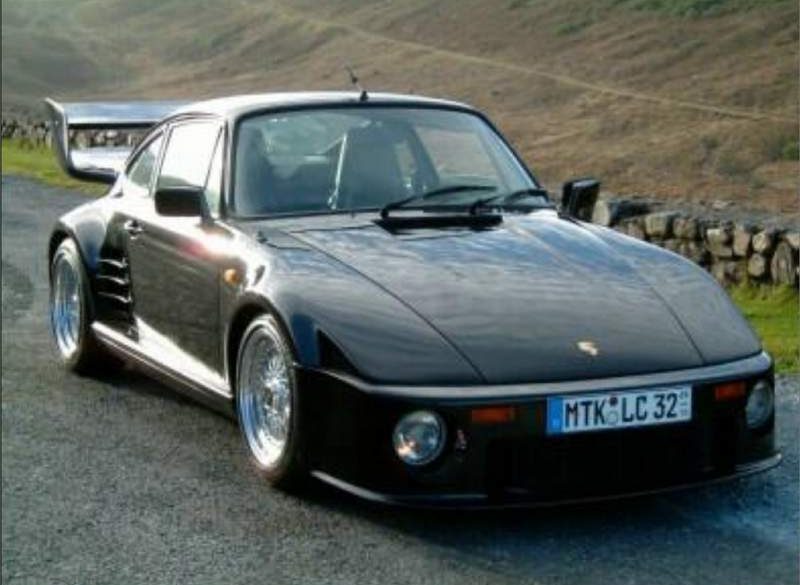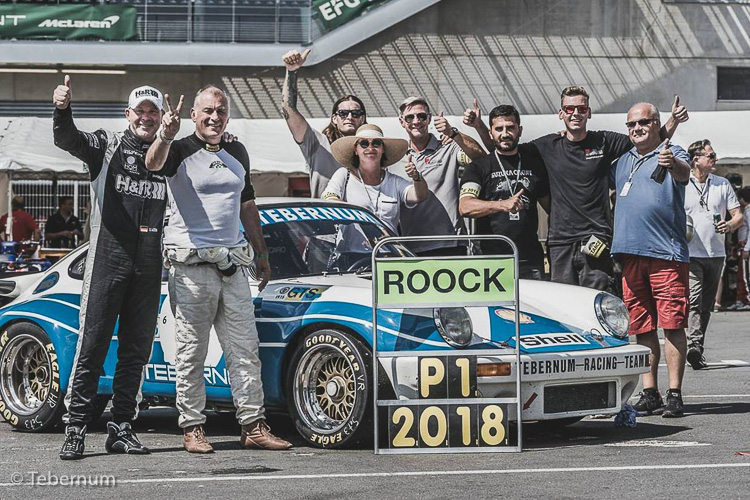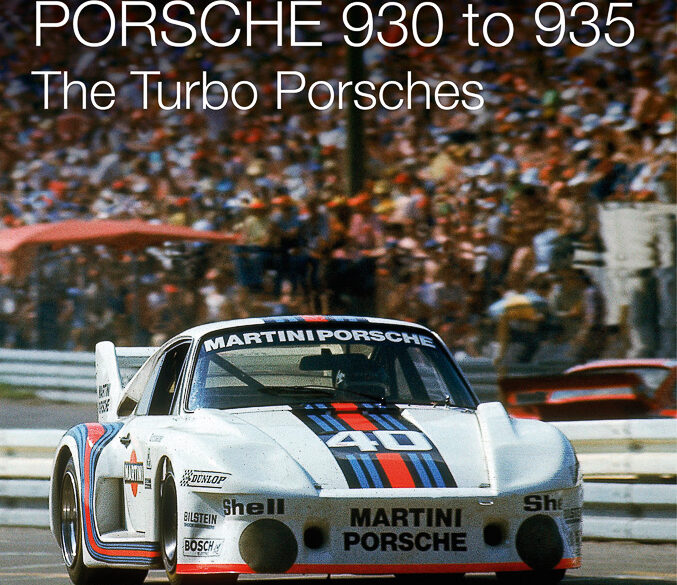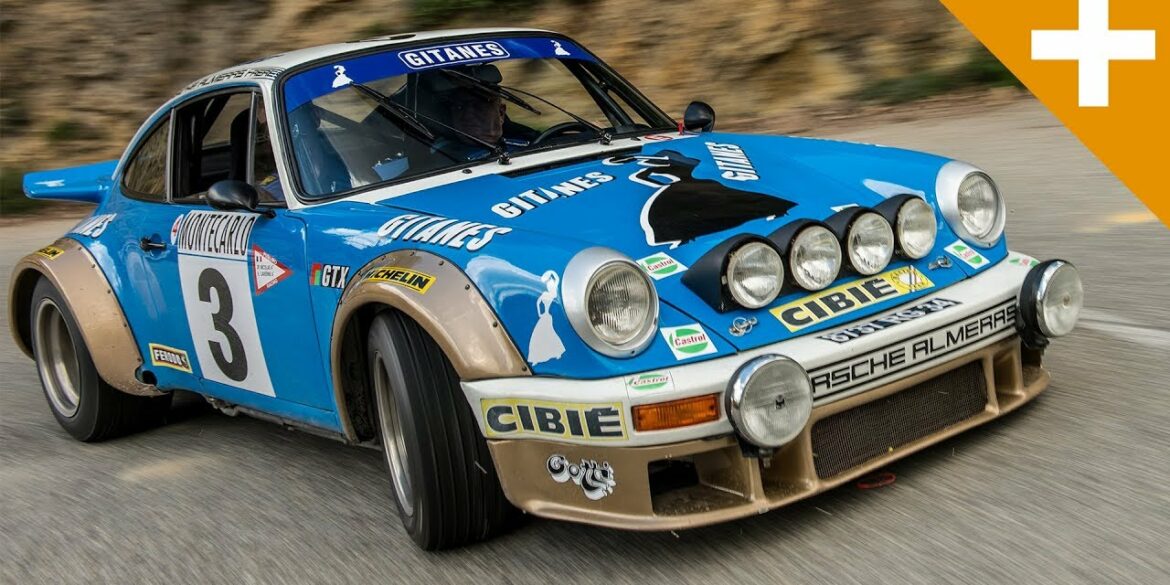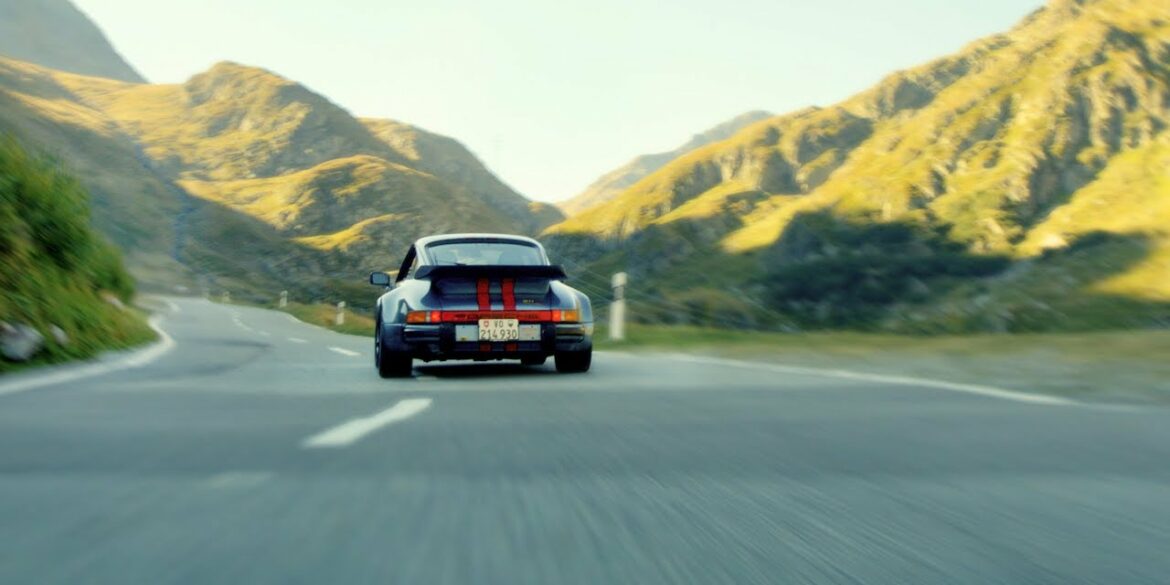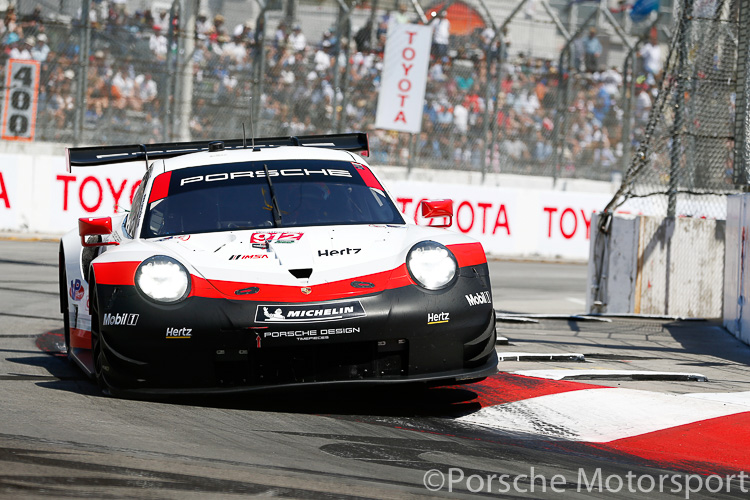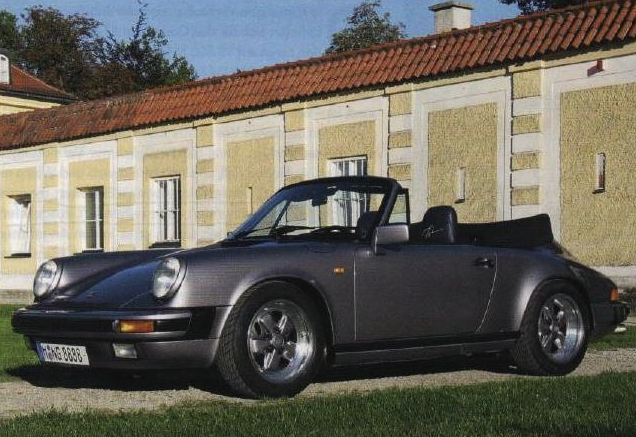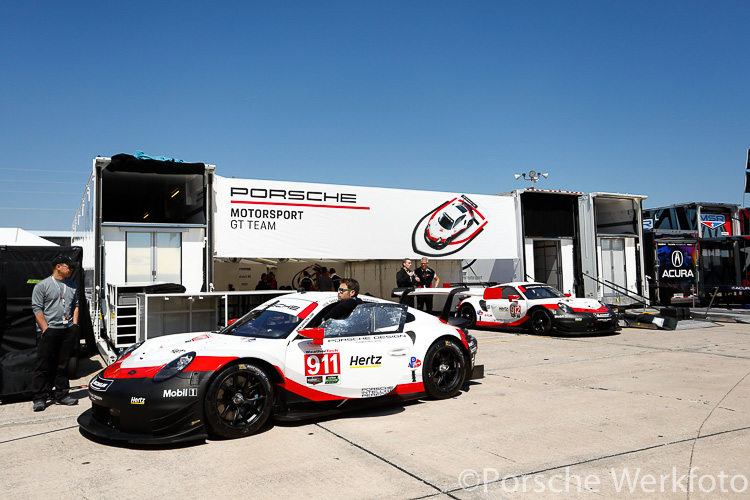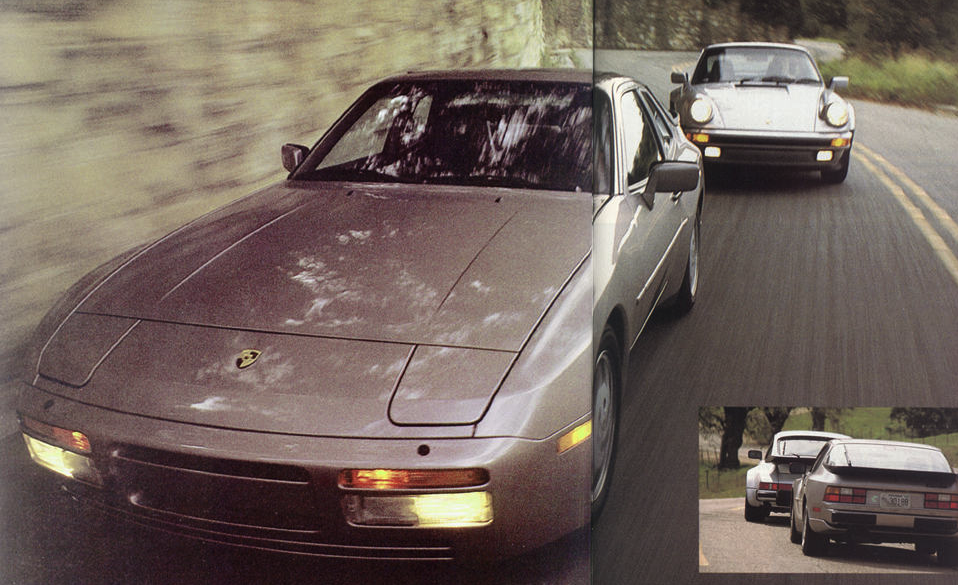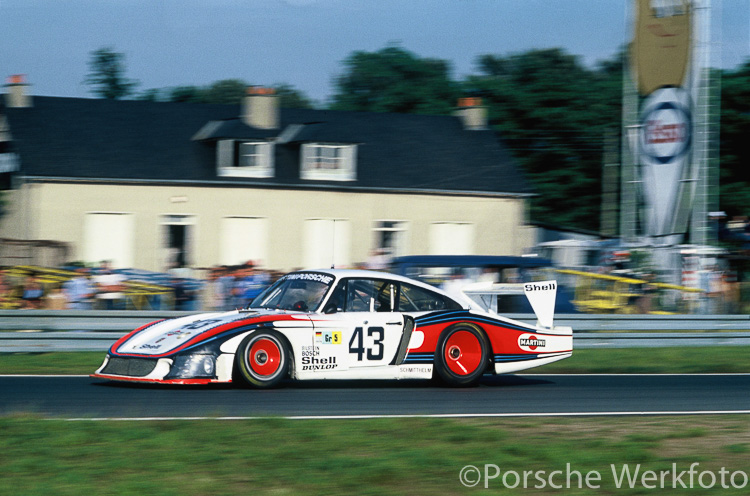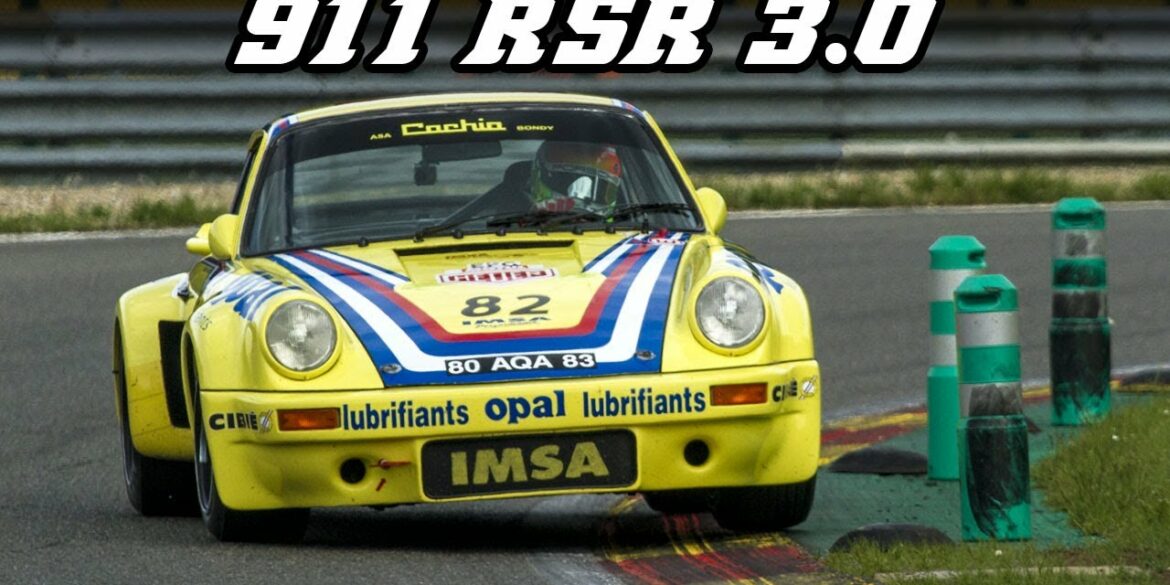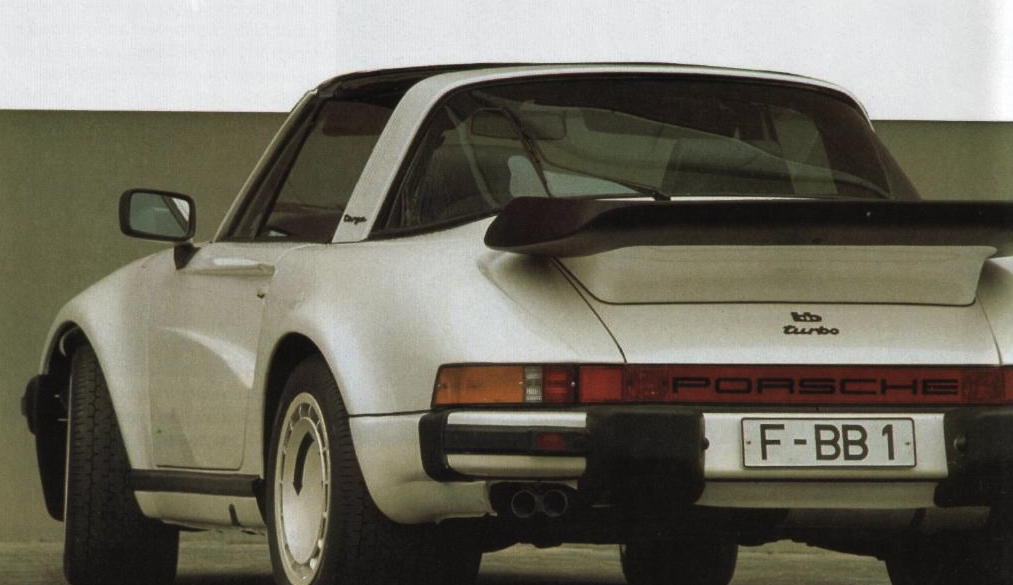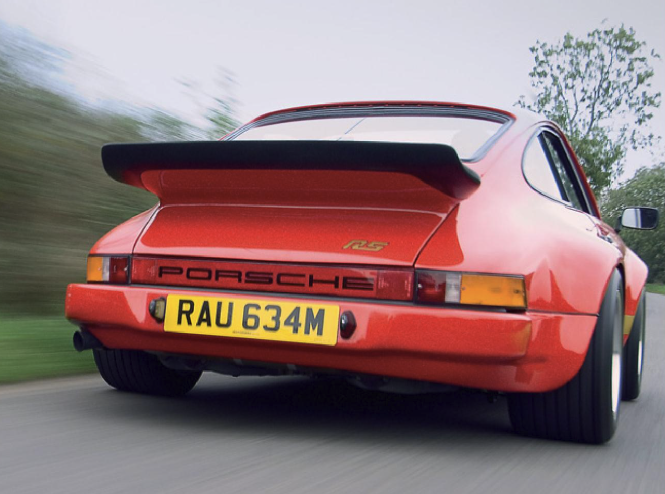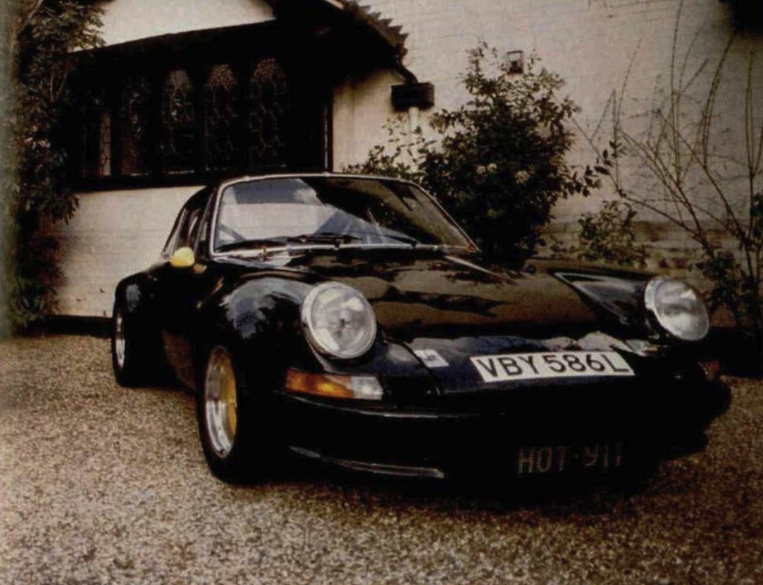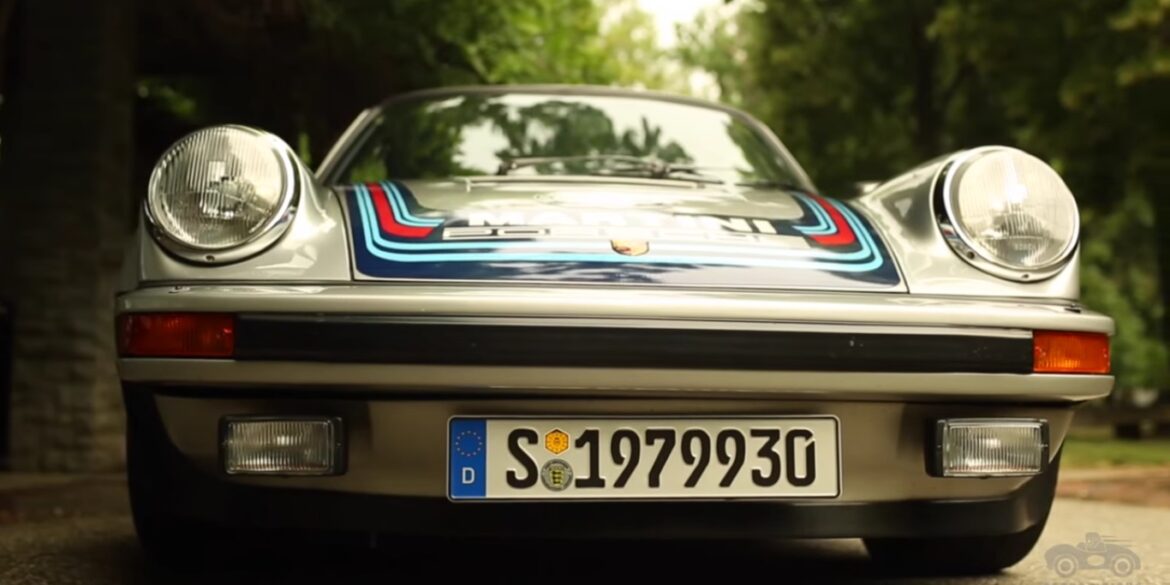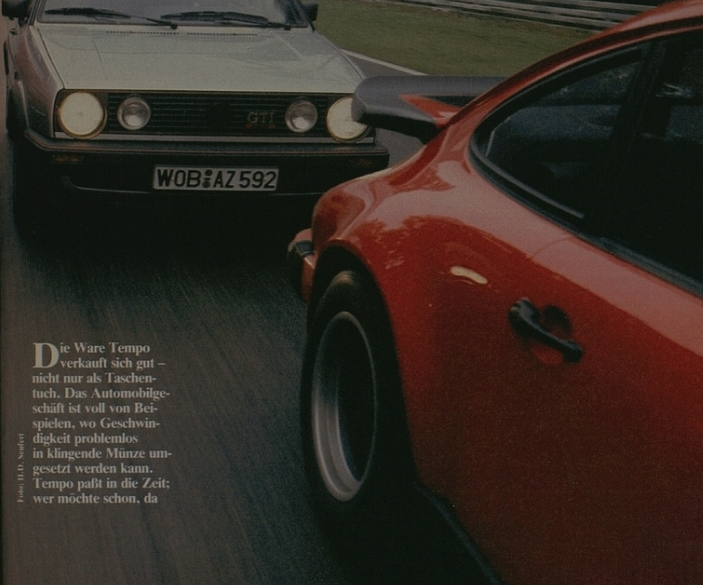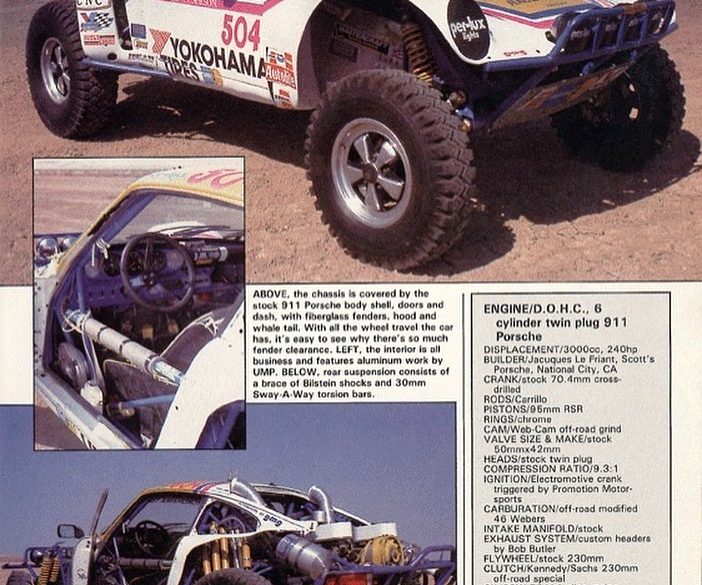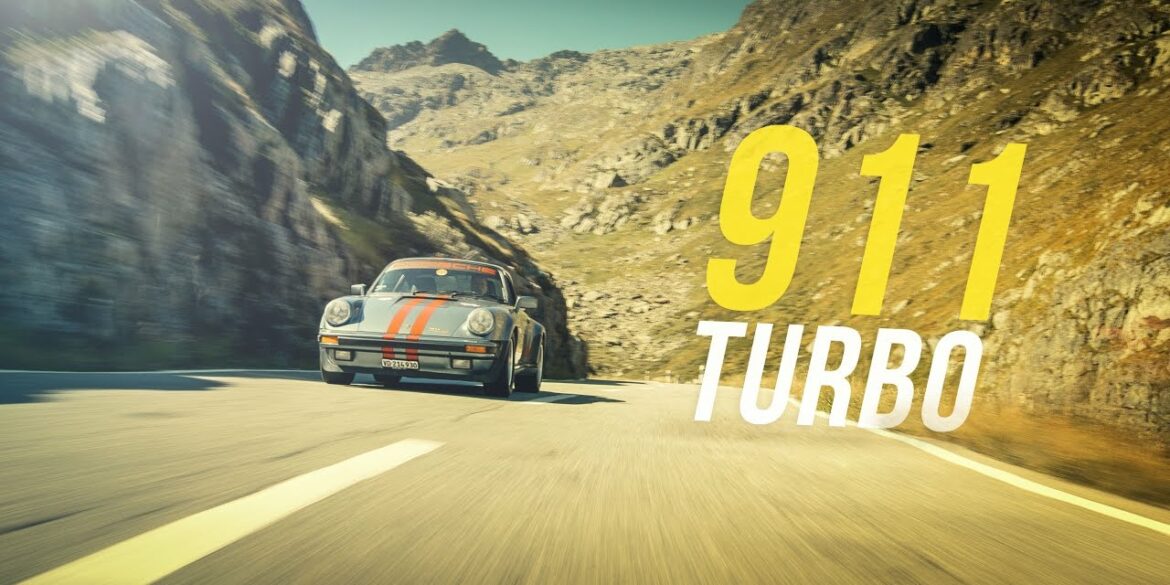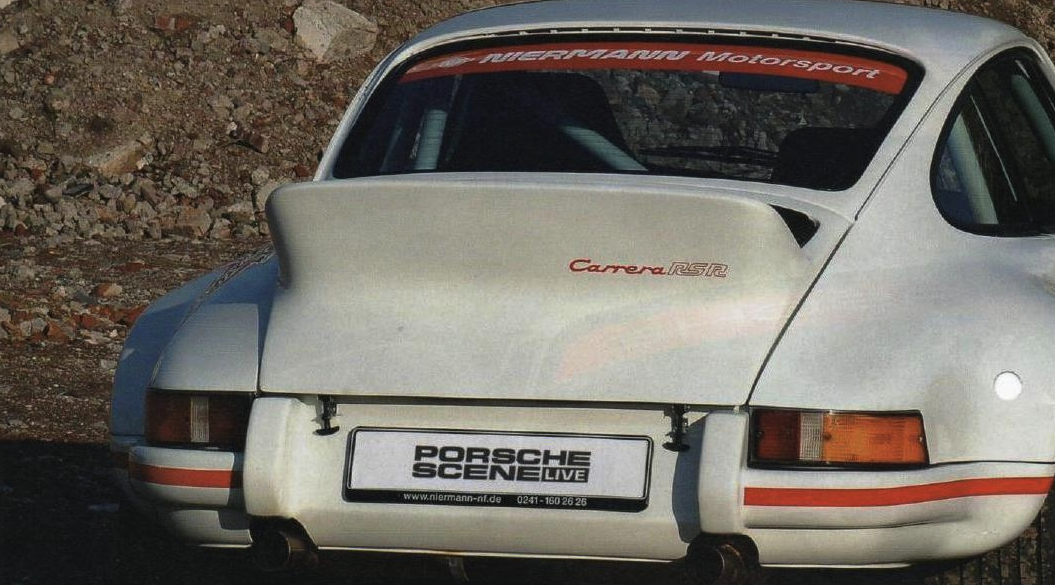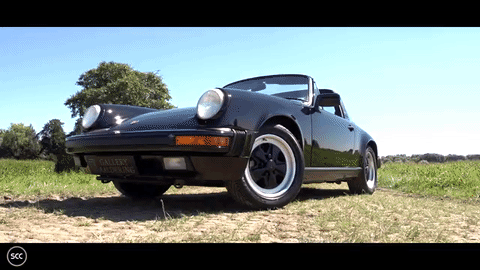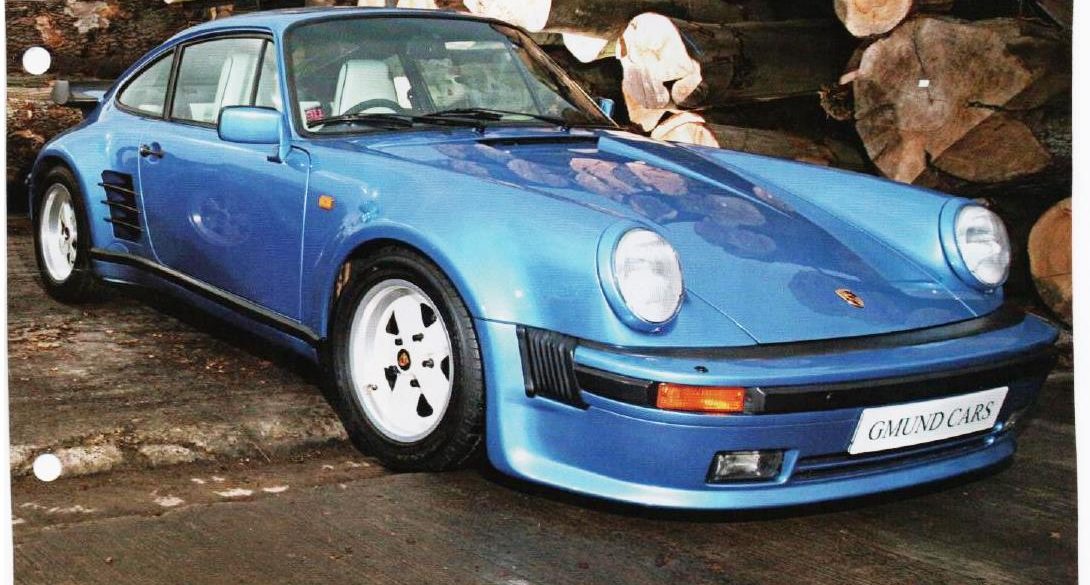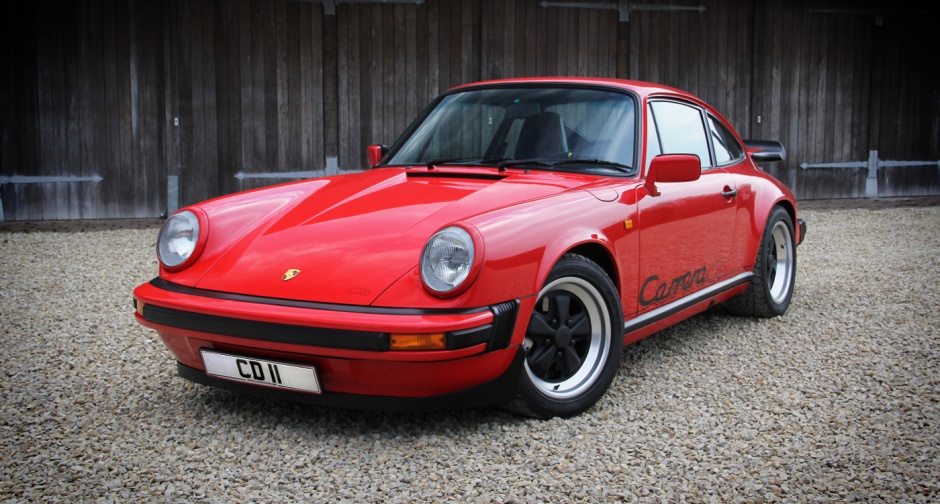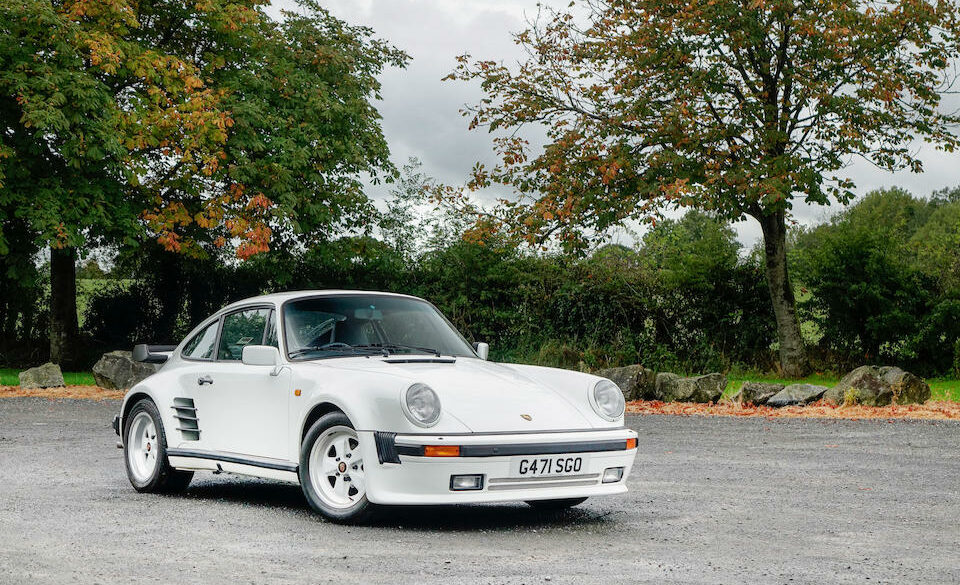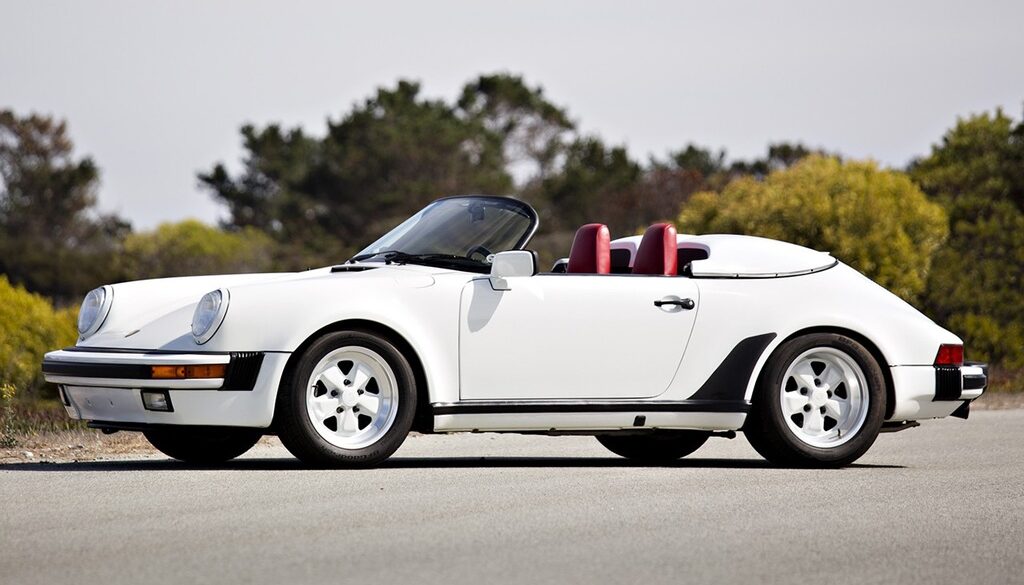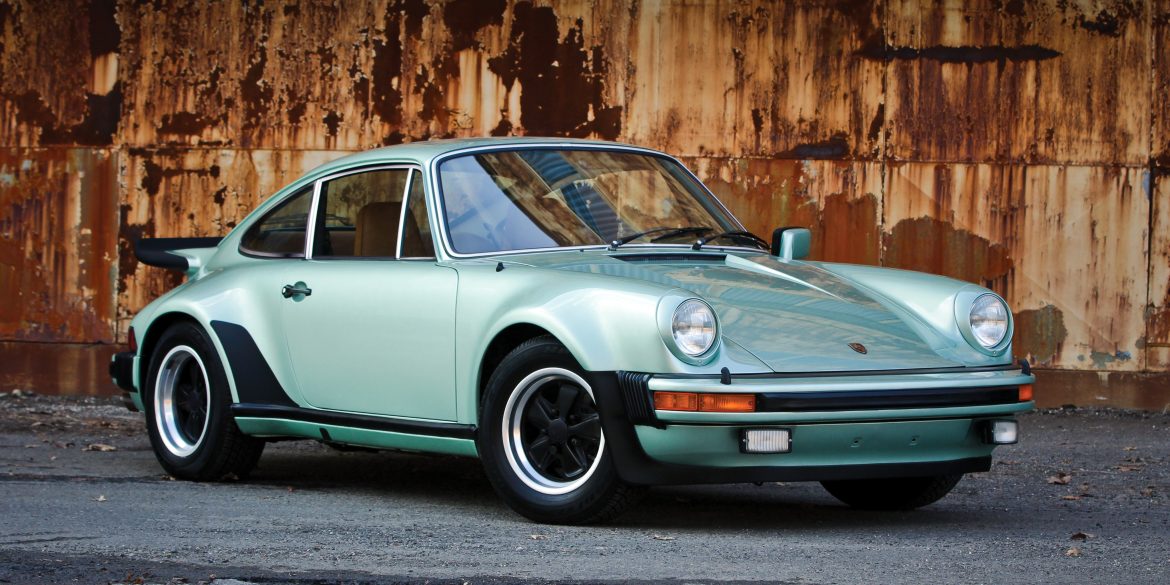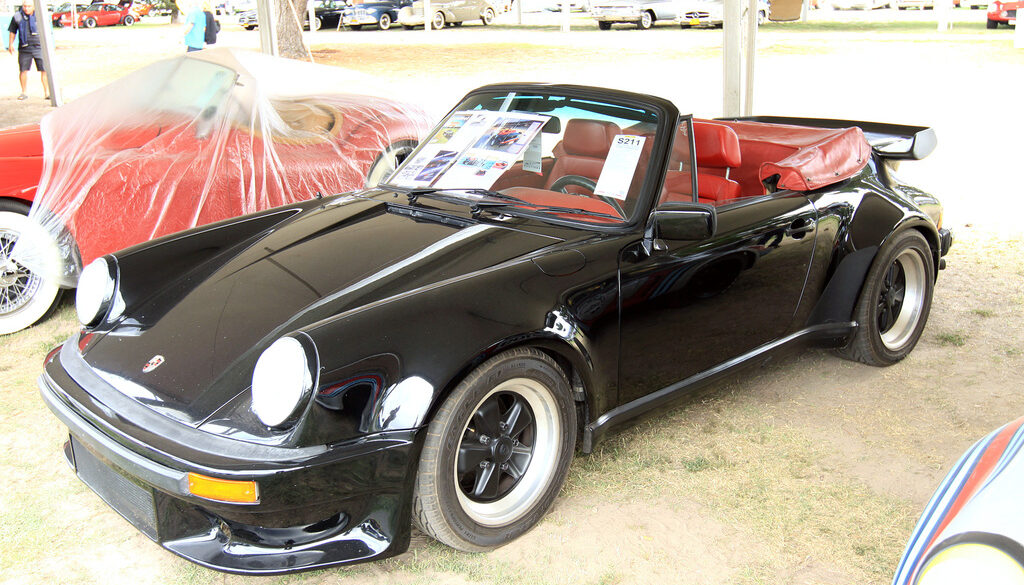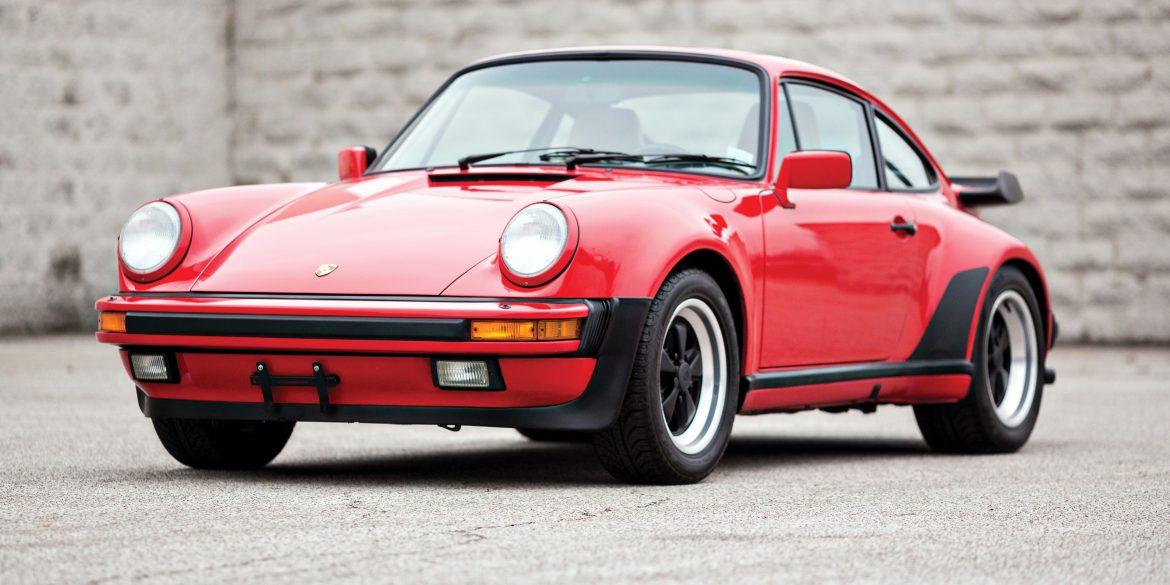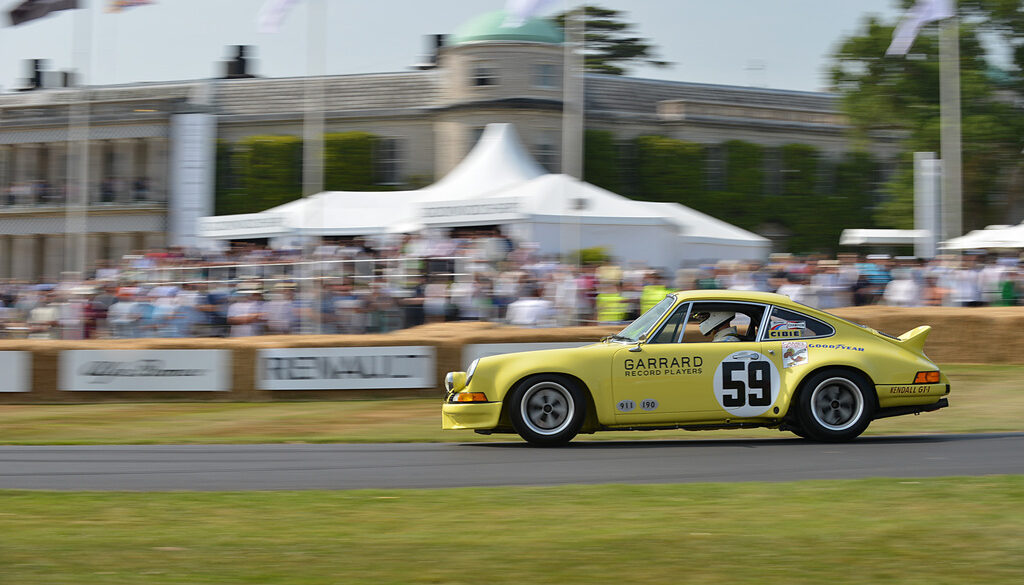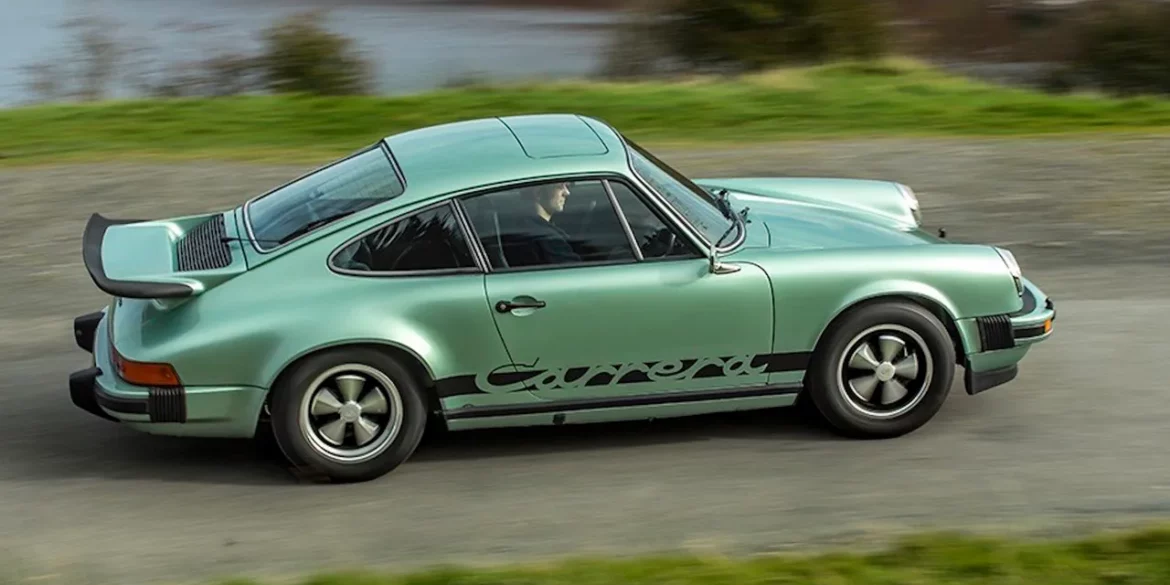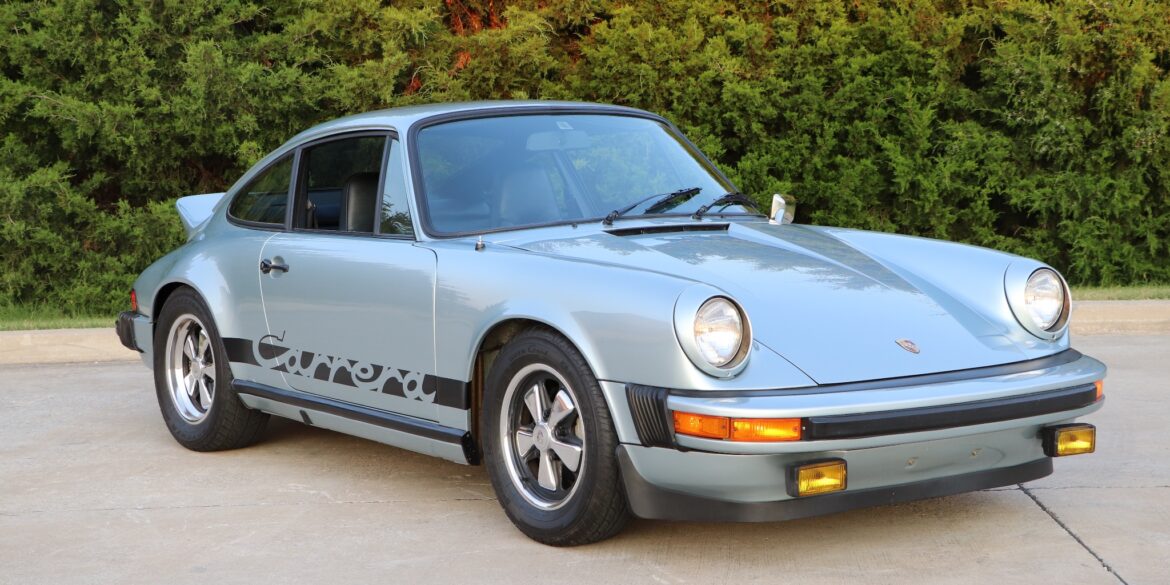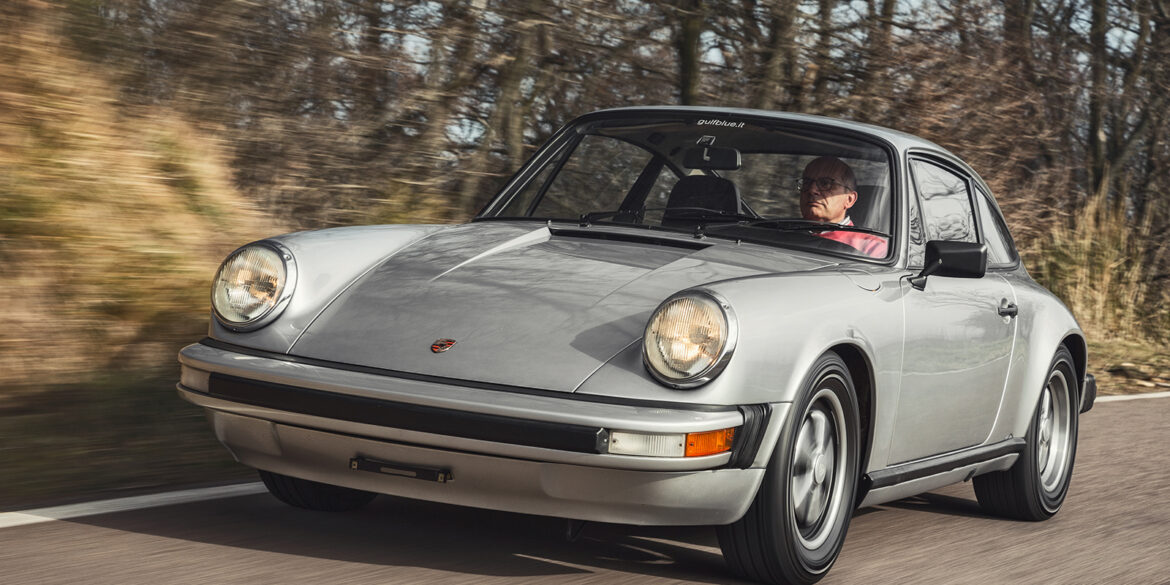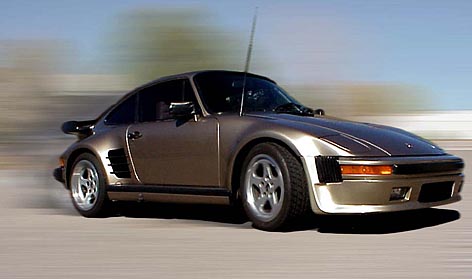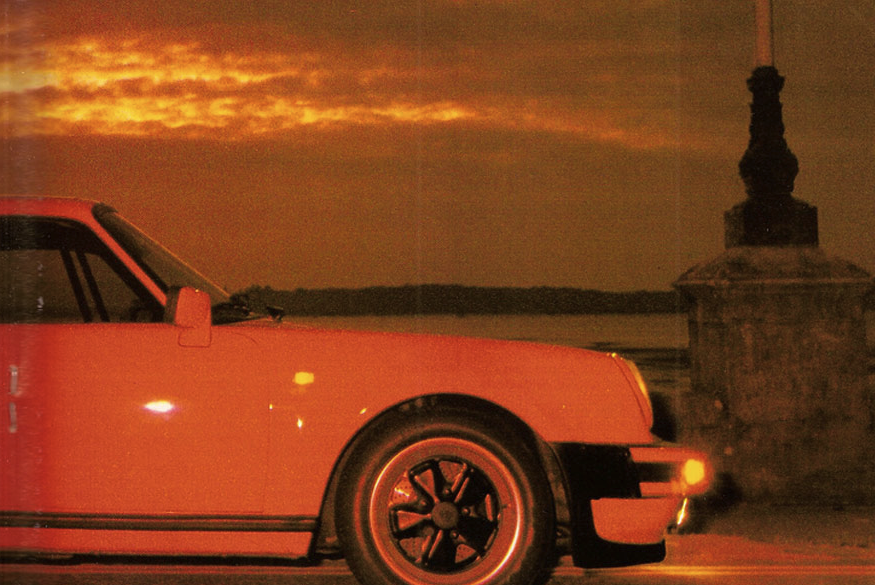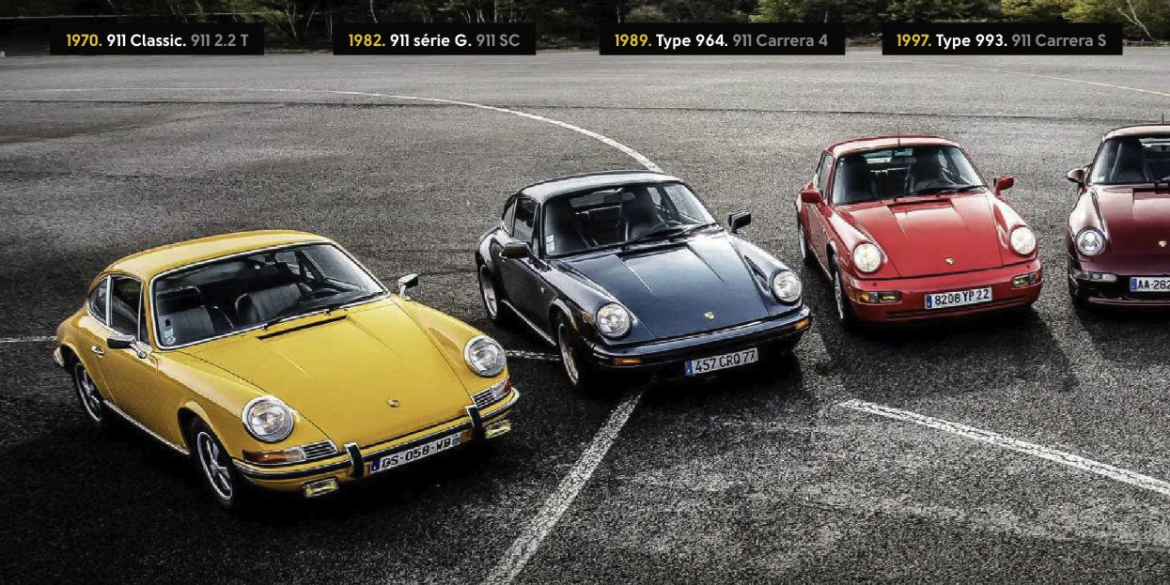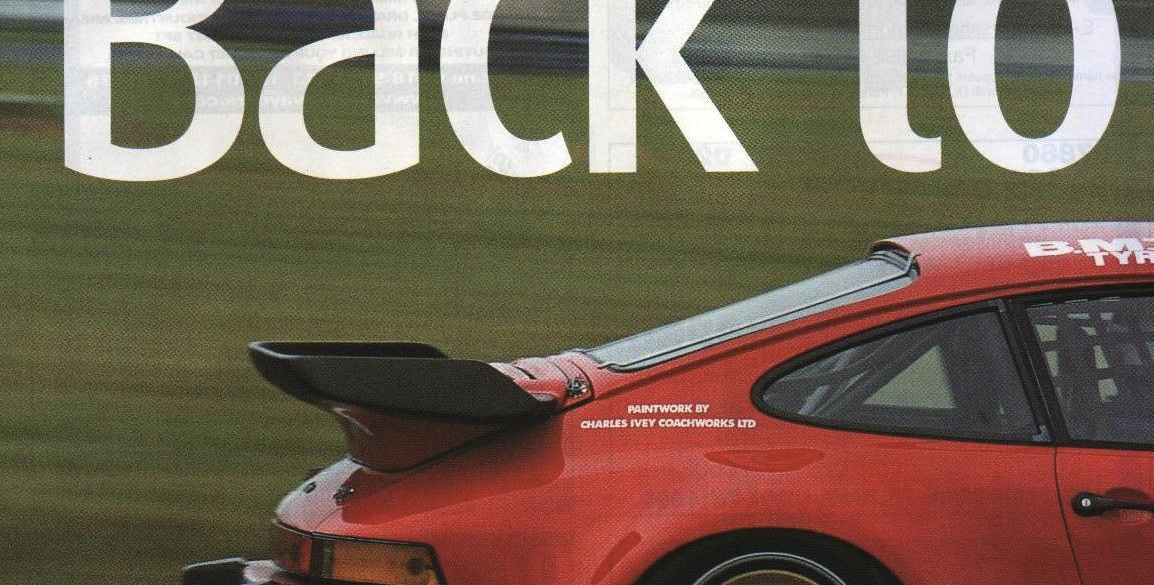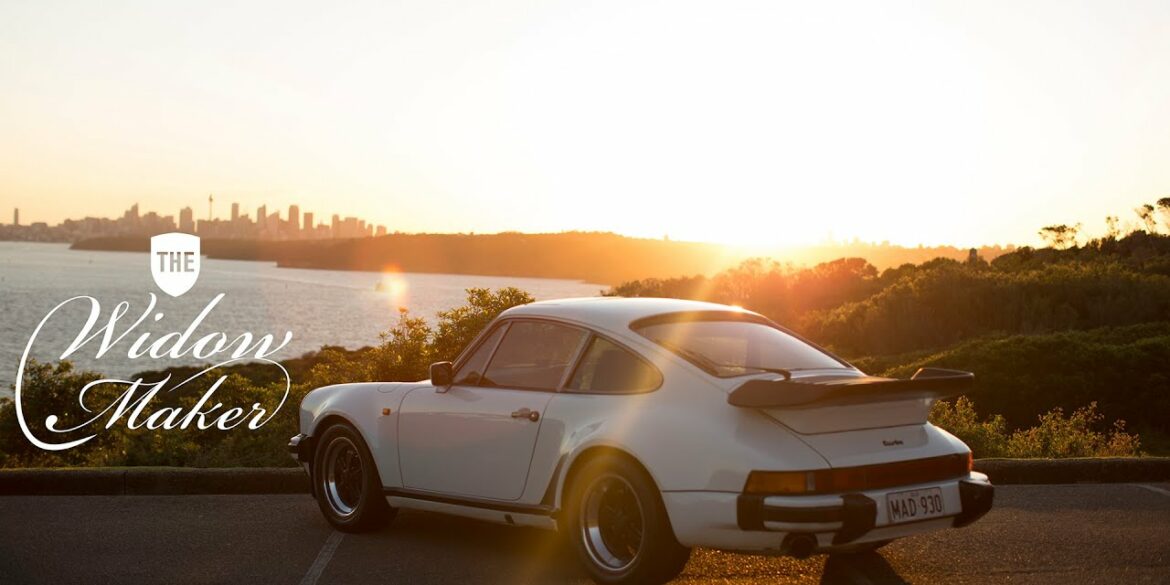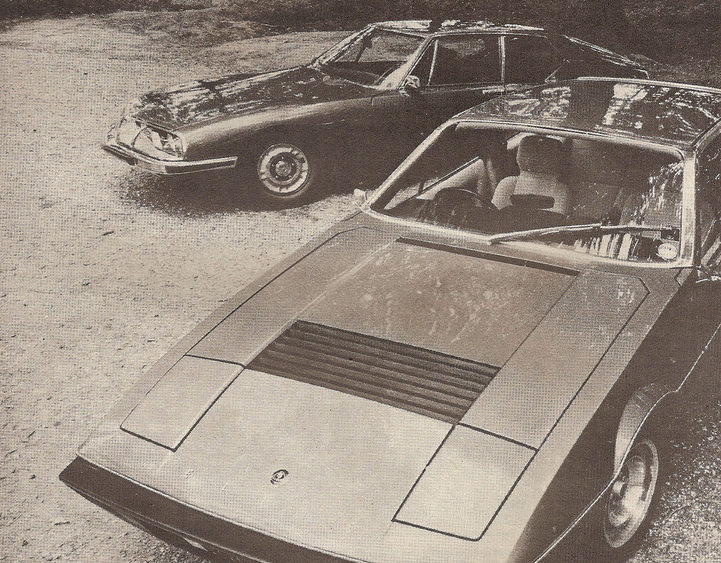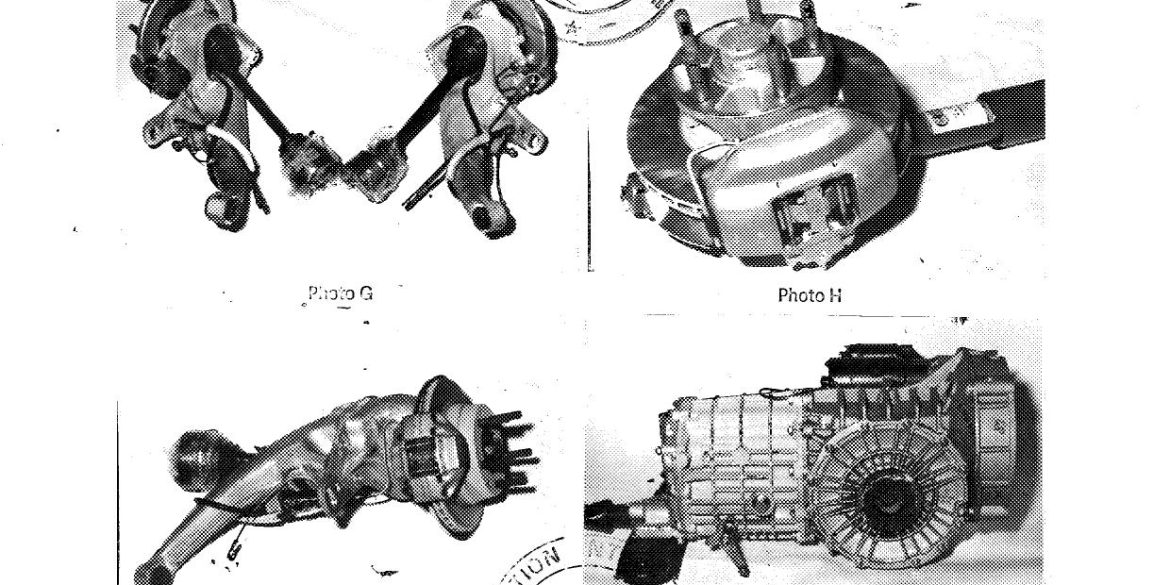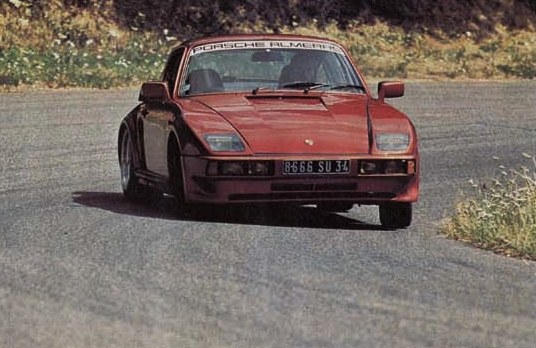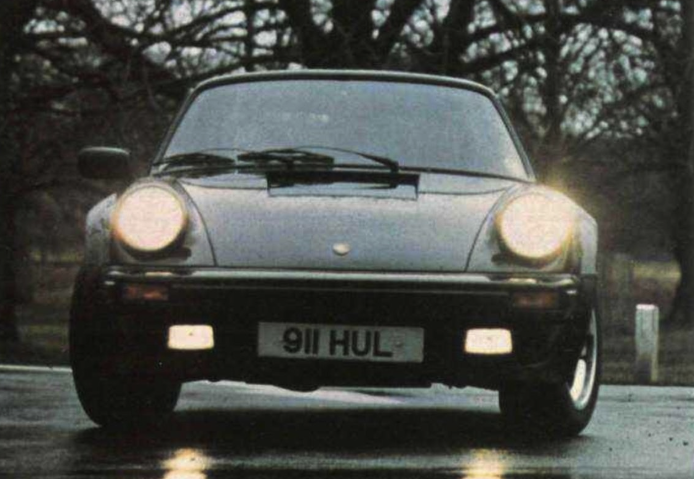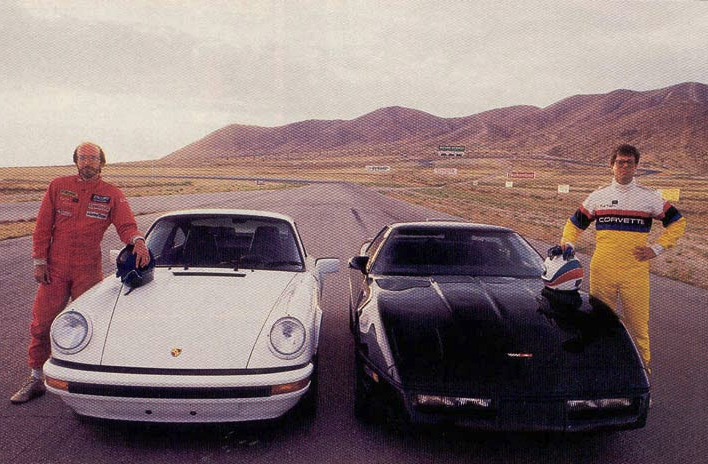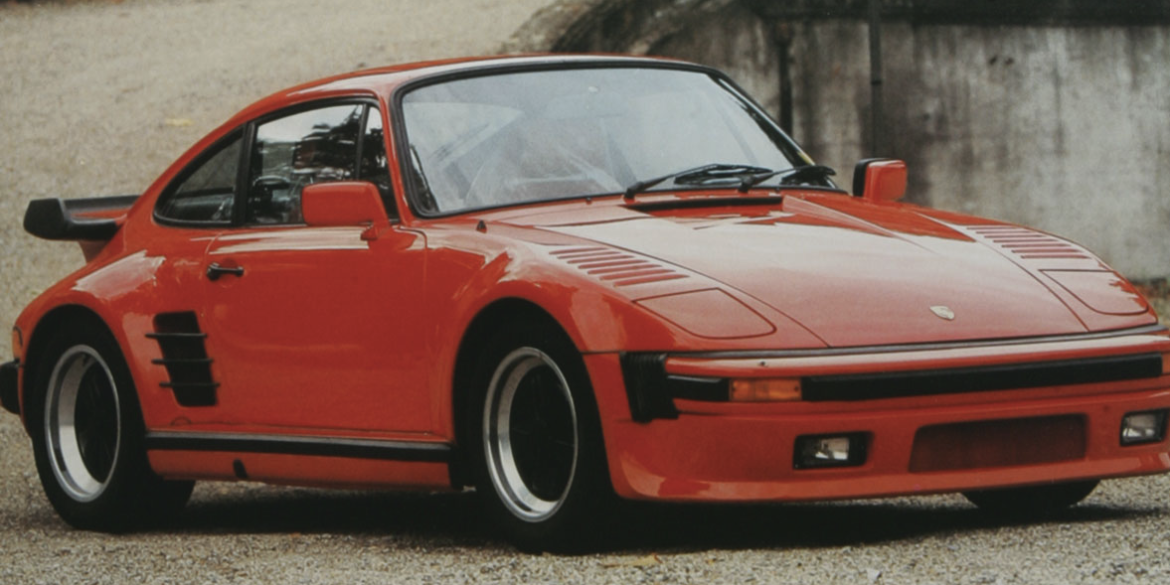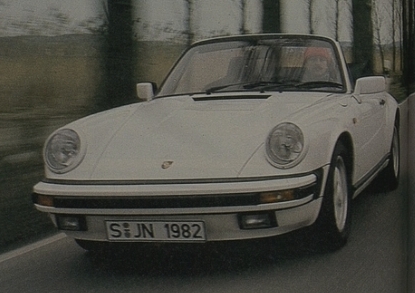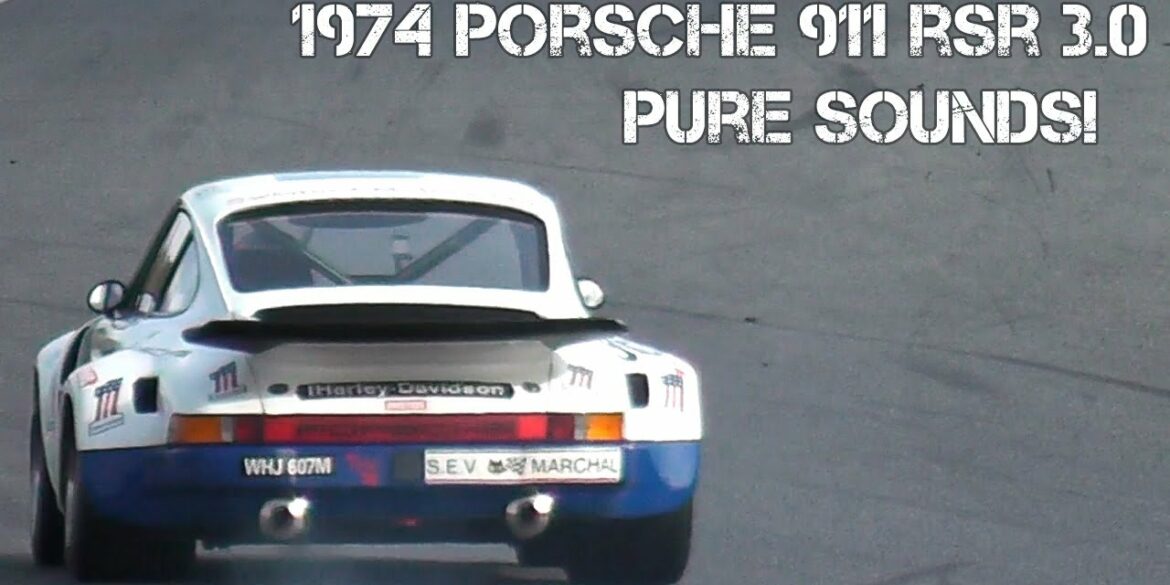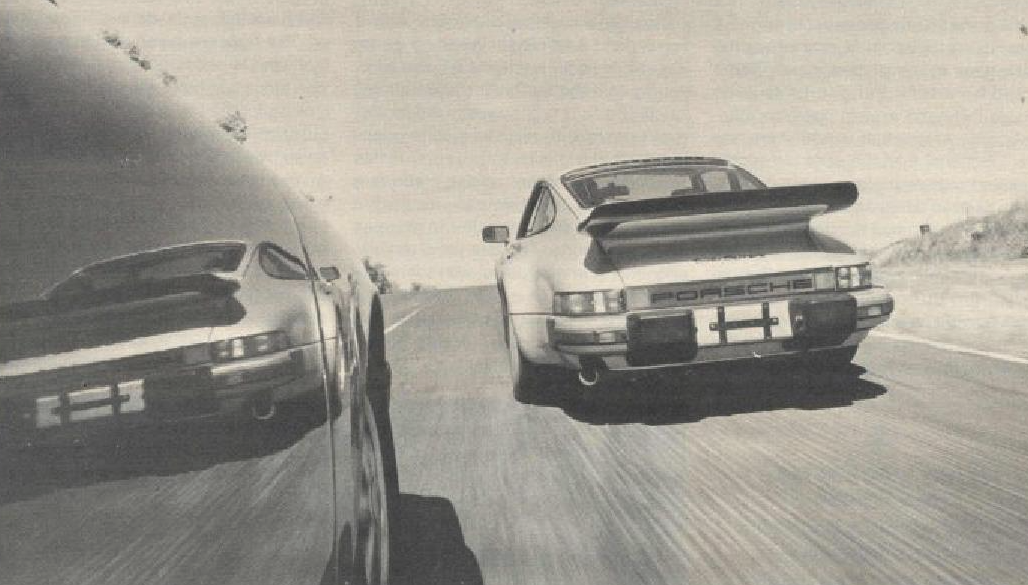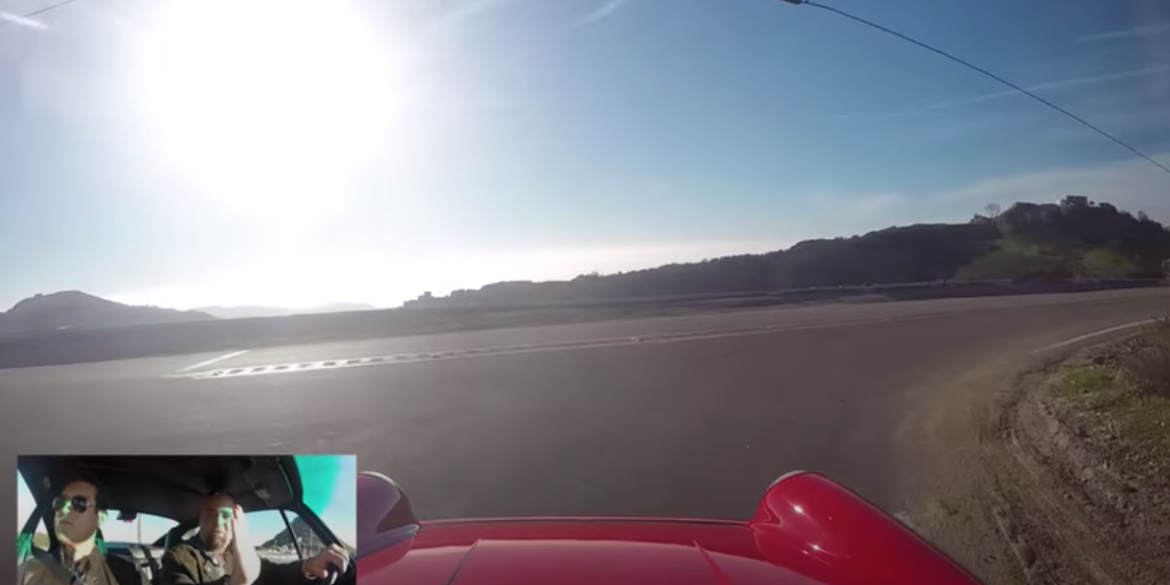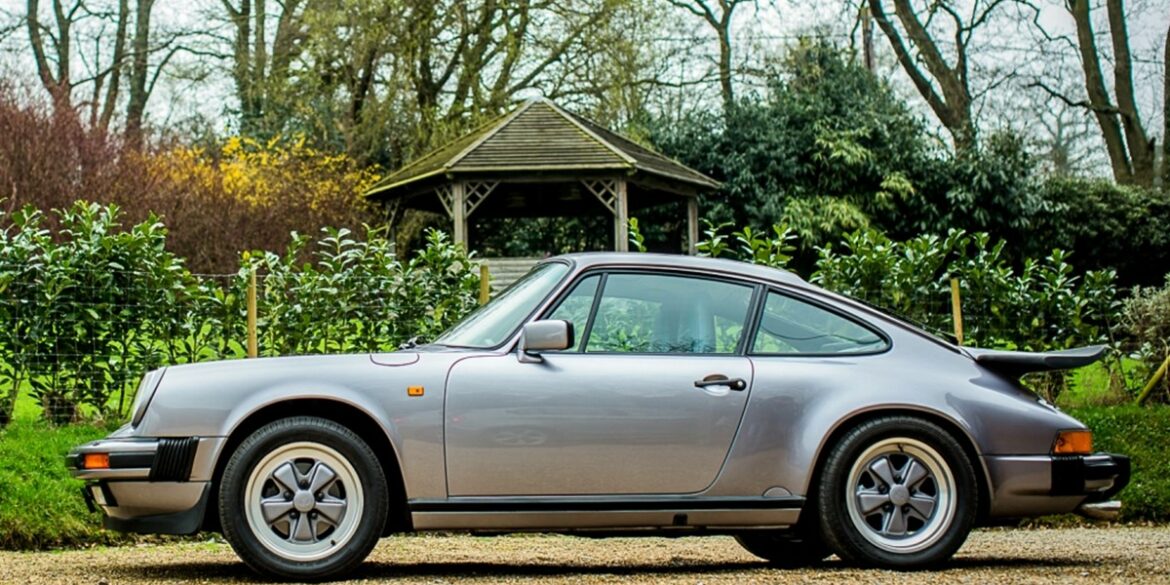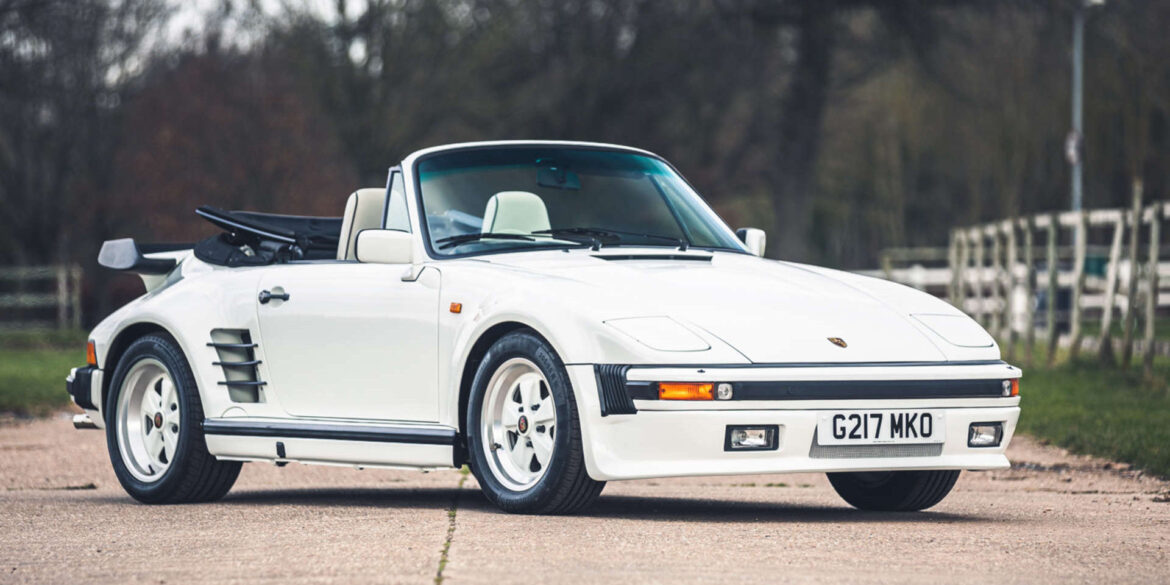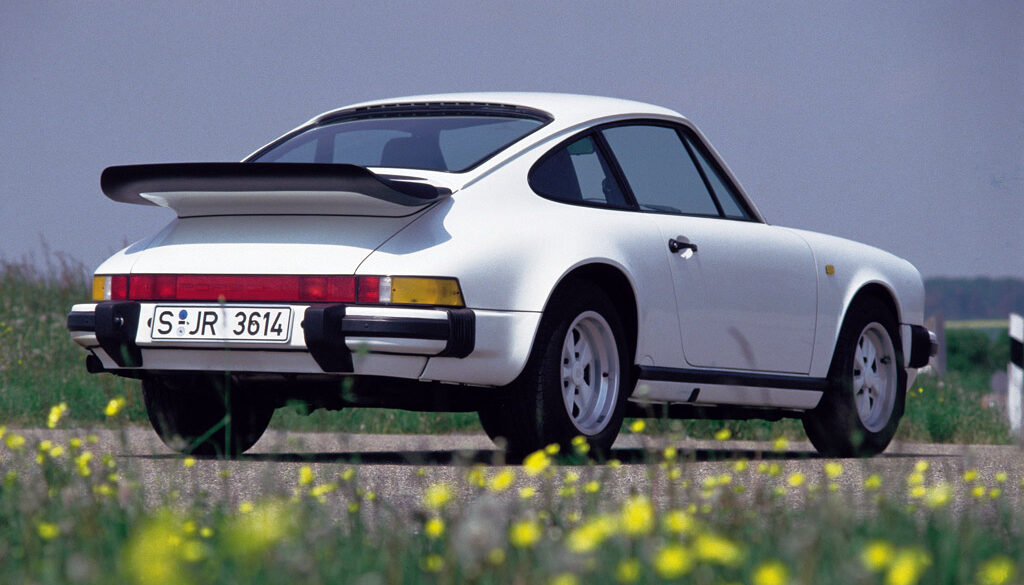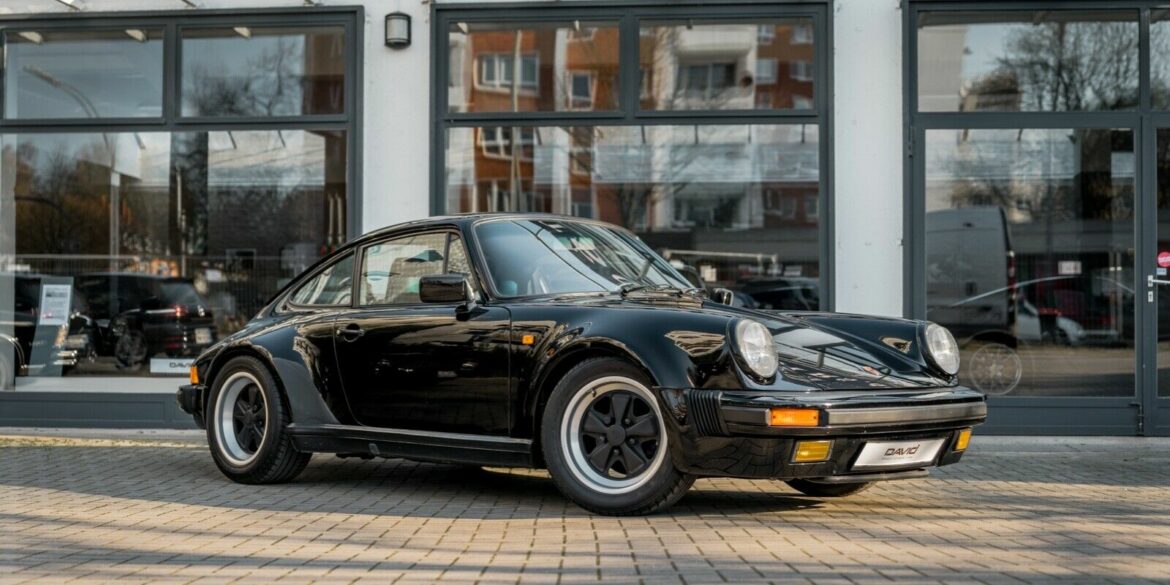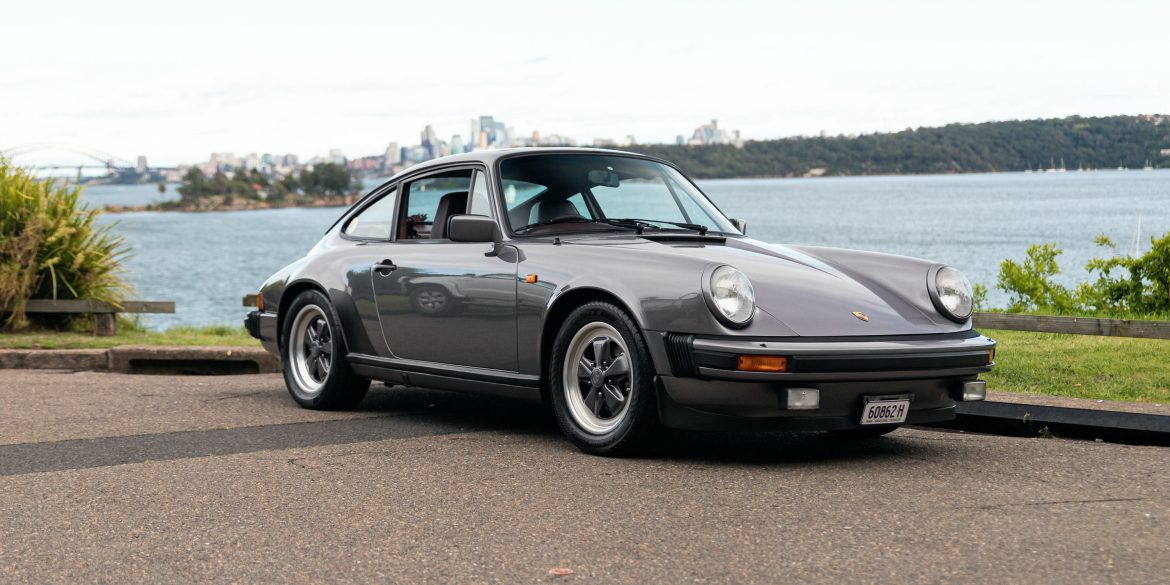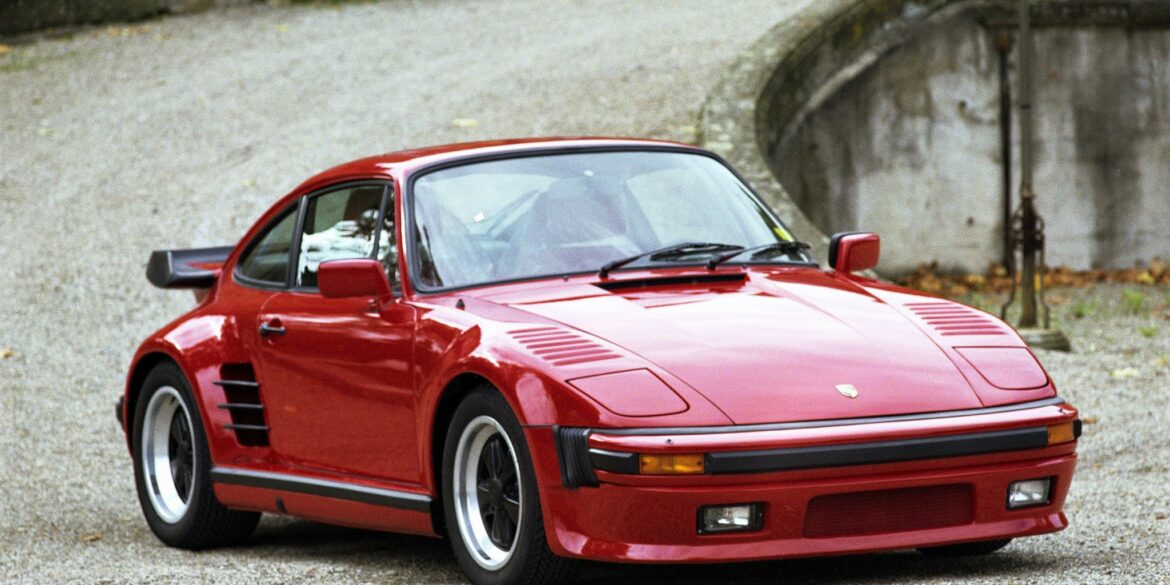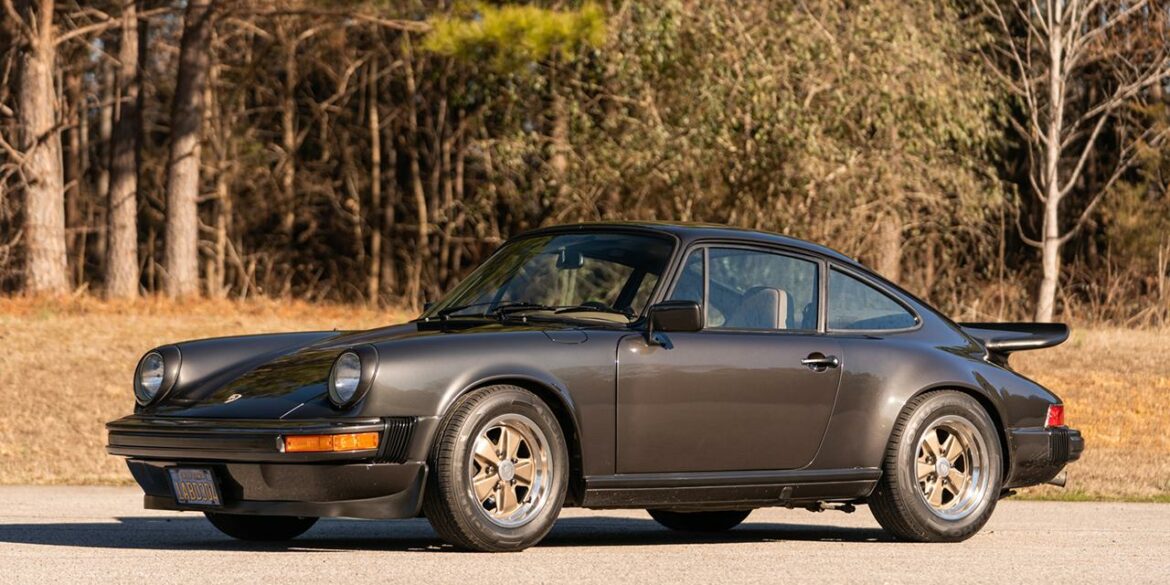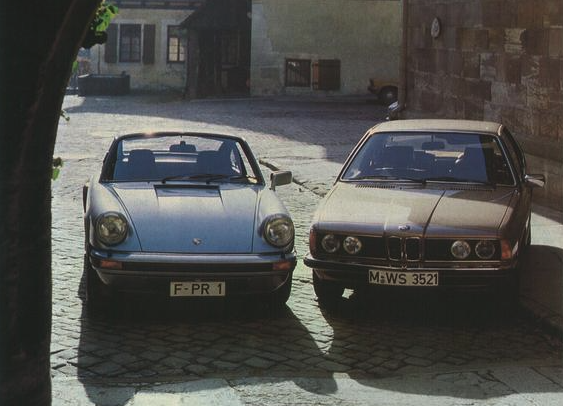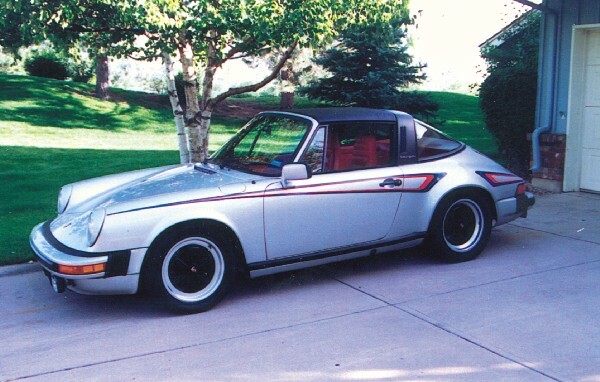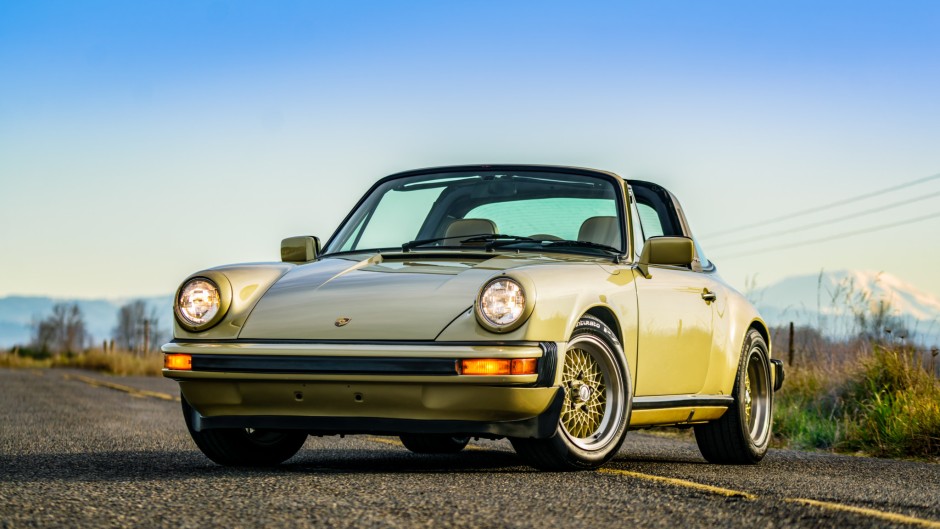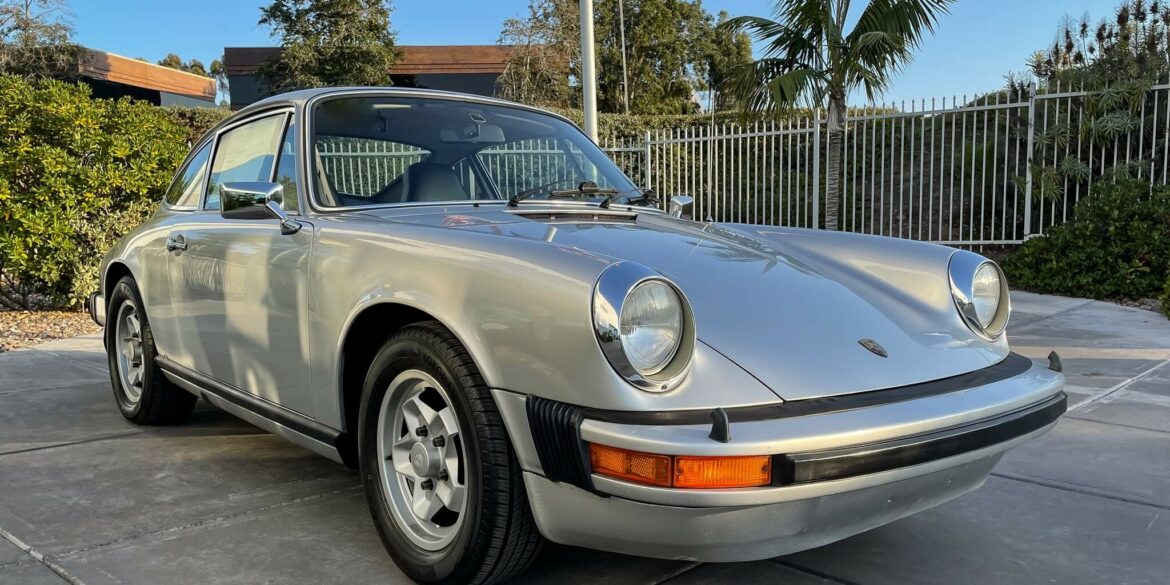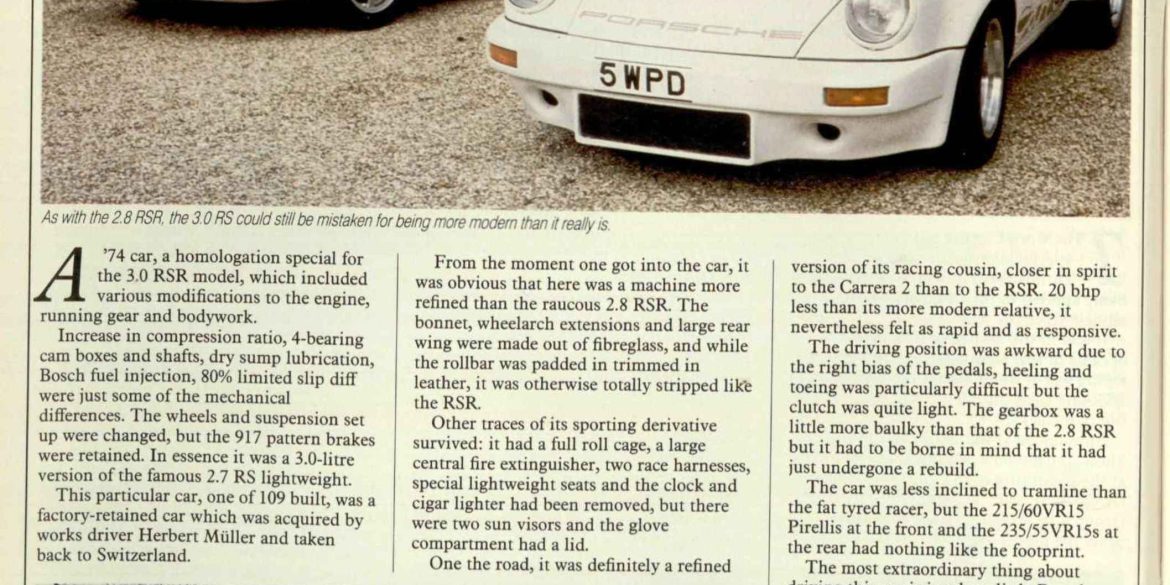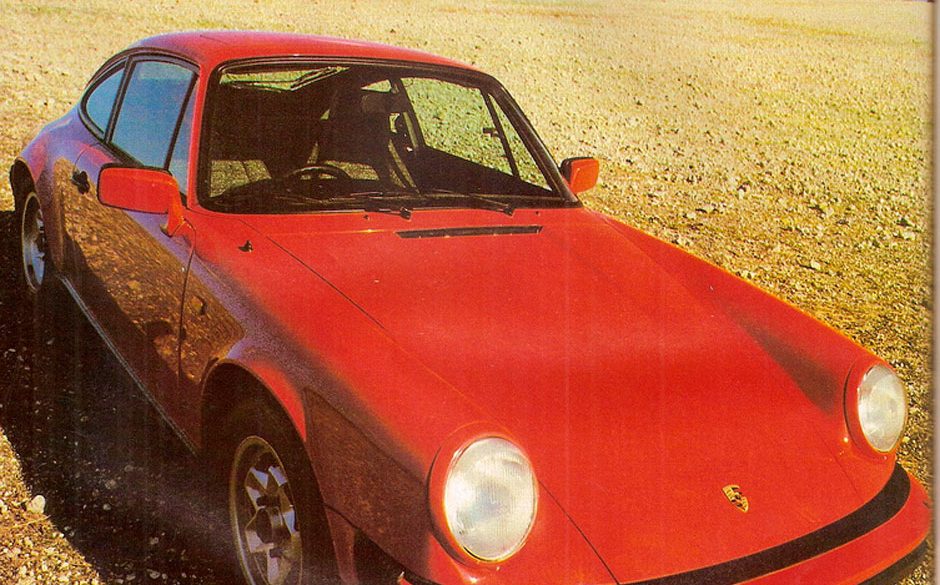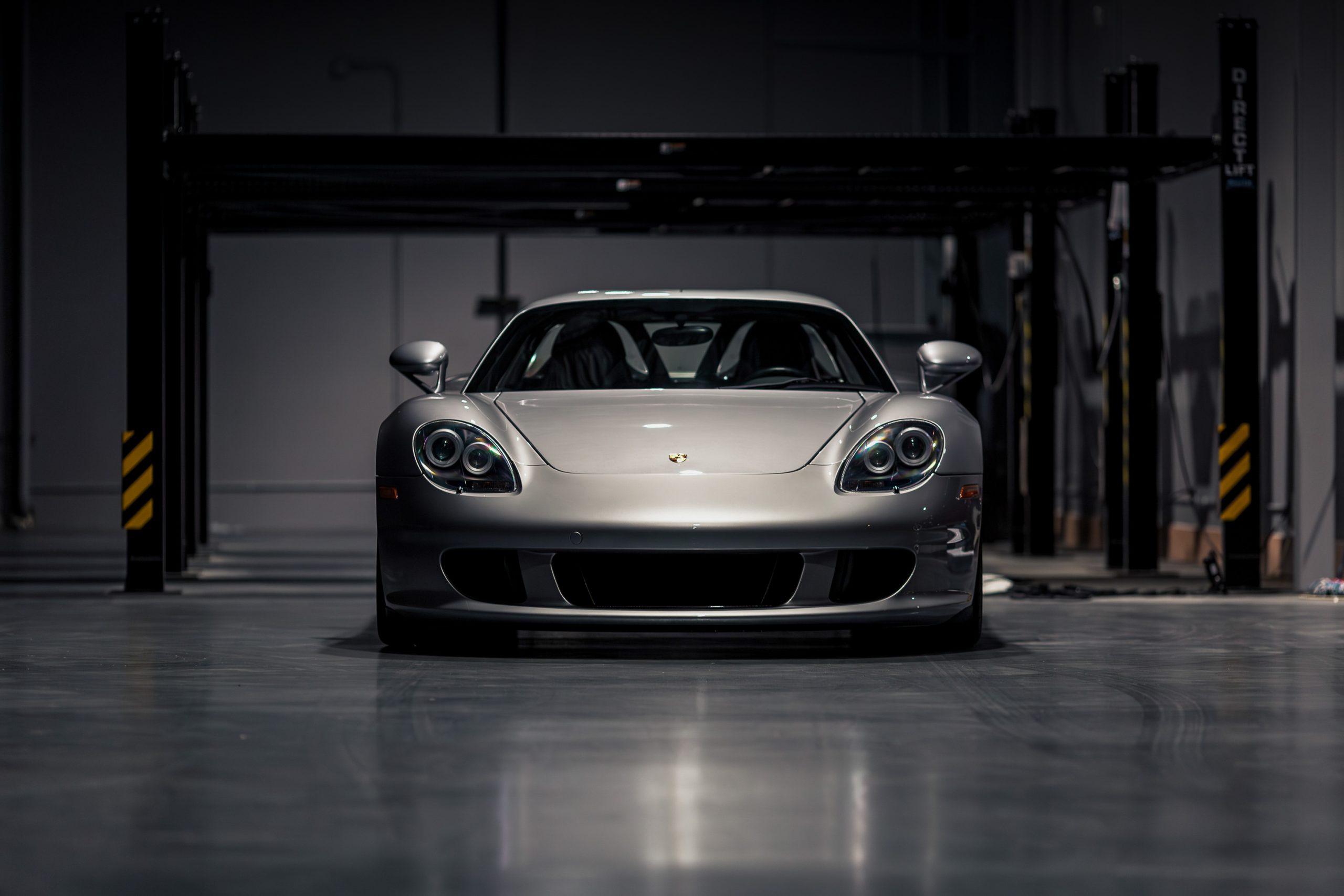Porsche 930 Turbo – One of the Greats Remember that episode where Damian mistakenly bought a broken Porsche 911 from Silverstone Auctions? The 930 Turbo without a turbo? Well it’s finally back, fixed, and glorious, thanks to Emblem Sports Cars. This week, TheCarGuys take the revitalised Turbo out for its first...
Is this the best driving classic 911? This is a great reviews of the 911 ClubSport. The 1987 Porsche 911 Carrera Club Sport the best driving classic 911 in the real world? It has lots going for it, lightweight, tweaked engine and suspension and 231bhp from its 3.2litre air-cooled flat...
POV Drive In A Porsche 911 3.0 Carrera RSR Factory Porsche racer Patrick Long has a million-dollar historic 911 3.0 Carrera RSR from 1975 to pedal, less than half the horsepower of the fastest cars in the class, and uses every ounce of talent and racecraft he owns in a...
Modified Slant Nose Turbo (930) On Road The 930 Turbo being reviewed in the great POV video. Nice footage and a good sense of the fun of driving a car like this....
Wipe the Drool From Your Chin It’s not every day that a European spec 1978 Porsche 911 SC comes your way, and when the guys at Makellos Classics saw the car for the first time, they knew right away it would be the perfect candidate for a safari project. The...
Charles and Tim – One last dance with the G series. This is a great review of the 911 ClubSport. The 1987 Porsche 911 Carrera Club Sport was underrated and rare. There is no doubt it is one special 911....
Le Mans 24 Hours, 23-24 June 1951: In the foreground of the workshop at Teloché is the #46 Porsche 356 SL driven by Edmond Mouche and Auguste Veuillet, while in the background is the #47 Porsche 356 SL which was damaged in practice by Rudolph Sauerwein Porsche has been represented...
No Subscription? You’re missing out Get immediate ad-free access to all our premium content. Get Started Already a Member? Sign in to your account here....
A True Head Turner We included a car from Makellos Classics in a list of our favorite Porsche custom cars in 2018, so when we were alerted of their most recent build we were pretty excited. The team at Makellos Classics got its hands on a European-spec 1978 Porsche 911SC....
Ernst Fuhrmann at the 24 Hours of Le Mans, 12 June 1977 Porsche’s first CEO is frequently maligned as the man who tried to kill off the 911. There is far more to his Porsche career than this misconception as he was the inspiration behind the 911 Turbo. This Porsche...
Porsche 911 Carrera RSR Turbo 2.1 On Track This is a 911 that wrote a big part of Porsche history. It was the first turbo powered Porsche 911 and the first turbo powered Porsche at Le Mans. This chassis debuted in the hands of Gijs van Lennep and Herbert Müller...
Turbo 3.0, by Ryan Snodgrass – © Parabolica Press Amongst its numerous attributes, Porsche sports cars have always been about performance, engineering, innovation and being different. From the production of the very first sports car to bear the Porsche name, the 356 which came into this world in 1948, the...
The Ultimate Restomod? Paul Stephens has been restomodding classic Porsche 911s for years. The Le Mans Classic Clubsport is his latest creation....
Best On Track POV Video I’ve Ever Seen This Porsche 911 Carrera RSR being hammered on-track is the stuff of dreams. This is a 1974 Carrera RSR Turbo 2.1 (1974) on Zandvoort circuit driven by Harm Lagaaij. The car is owned by Porsche Museum. Camera angle and audio quality are...
Le Mans Classic, 6-8 July 2018: Grid 6 – The #67 Porsche 911 Carrera RSR 3.0 (1975) driven by Michael Roock and Uwe Alzen, won the GTS class and finished a fine eighth overall in Grid 6 Michael Roock and Uwe Alzen are class winners again, winning the GTS class...
1987 model 911 Carrera 3.2 Club Sport Coupé The 911 Carrera Club Sport was Porsche’s attempt at rolling back the years and once again, stoking the fires of high performance, lightweight motoring. Porsche Road & Race pulls back the covers to reveal the origins of the 911 Carrera CS. Originally...
Porsche 930 to 935: The Turbo Porsches – by John Starkey © Veloce Publishing Ltd Much has been written about Porsche’s racing exploits over the years, but there is perhaps one model that has served, more than any other, as the pillar of the company’s achievements. Prototypes have come and...
Passenger Ride In a Porsche 911 SC Henry Catchpole recently found himself in the passenger seat of the 1978 Monte Carlo Rally winning Porsche 911 SC RS driven by none other than the winning driver himself, Jean-Pierre Nicolas...
Porsche 930 Turbo on the Great St. Bernard Mountain Pass The 930 Turbo on the Great St. Bernard Mountain Pass – Nothing but engine sound!...
Long Beach, IMSA WeatherTech SportsCar Championship, 14 April 2018: #912 Porsche 911 RSR of Laurens Vanthoor and Earl Bamber bounces over the kerbs during the race The efforts of the factory Porsches over the weekend came to naught, as the two 911 RSRs finished well down the order in the...
12 Hours of Sebring, 17 March 2018: In the paddock ahead of practice, the #911 Porsche 911 RSR of Patrick Pilet, Nick Tandy and Frederic Makowiecki Porsche scored just a single win in the 2017 WeatherTech SportsCar Championship about three-quarters into the season, but now the Porsche GTLM team have...
#5 Porsche 908/3 – Juan Fernandez/Francesco Torredemer/Eugenio Baturone – NRF The 1972 season broke, ushering in with it a new era of racing. The Porsche 917 had reigned supreme for two years, but the race authorities (read FIA) had had their fill of Porsche interpreting the rules their way, and...
Great sound, great engine! Filmed at Circuit Spa-Francorchamps, Zolder and the Nürburgring between 2011-2017. Great compilation of on-track fun in a bunch of 911 RSR 3.0 racecars....
We all know that Porsche introduced a high performance fuel injected Carrera specifically for the European market in 1975, known as the 1975 Porsche 911 Carrera 2.7. This car is a lot like similar to the 1973 2.7 RS with its 210bhp 911/83 engine. But the 2.7 Carrera is known...
No Subscription? You’re missing out Get immediate ad-free access to all our premium content. Get Started Already a Member? Sign in to your account here....
This video tells the story of a Porsche 911 Turbo or better known as 930 and how its owner get his hands on a such amazing car. “This car garners attention from everyone,” says Grant Karnes, “and I think it kind of draws everybody in to what Porsche is.” Owned...
“We’ve had Porsches in our family for decades…my father had a billion of them, I think,” says Deryck Shakespeare. “But my very first memory [of this car], and my fondest one, is when I put the keys in the ignition and drove it out of my uncle’s garage.” The story...
Porsche 911 Turbo (930) The 930 Turbo on one of the greatest roads in the world. A short video, but boy does it capture the fun and speed of the Widowmaker well. Wonderful video....
Meet the Classic Porsche 911 Carrera 3.2 Targa from 1987 The Porsche 911 (pronounced Nine Eleven or German: Neunelfer) is the flagship of the current line up of Porsche. It is a two-door grand tourer made by Porsche AG of Stuttgart, Germany. It has a distinctive design, rear-engined and with...
1987 – 1989 Porsche 911 Carrera 3.2 CS Pictures & Gallery...
1974 Porsche 911 Carrera Turbo 2.1 Pictures & Gallery...
Only 50 units made. The 911 Turbo Limited Edition comes equipped with the 330 bhp power unit normally only available in the 911 Turbo with Sport Equipment. In addition, the fitment of a limited slip differential as standard ensures the the increased engine performance can be used to it’s fullest extent. This Limited Edition also adopts the rear wheel air intakes of the Sport Equipment version. Essentially an SE without a slantnose front.
1989 Porsche 911 Speedster Pictures & Gallery...
(1975 – 1977) Porsche 911 Turbo 3.0 Pictures & Gallery...
1987 – 1989 Porsche 911 Turbo 3.3 Cabriolet (930) Pictures & Gallery...
1978 – 1989 Porsche 911 Turbo 3.3 Coupe (930) Pictures & Gallery ...
1973 Porsche 911 Carrera RSR 2.8 Pictures & Gallery...
In 1974 Porsche offered a high performance fuel injected Carrera specifically for the European market. These were close to 2.7 RS specification and are often referred to as the 2.7 or Euro Carrera. In many regards, this car is similar to the 1973 2.7 RS in touring trim, with its 210bhp 911/83 engine, but the 2.7 Carrera is based on the updated G-series body and interior. Later Carreras that reach American shores used had reduced power and throttle response compared to Euro counterparts.
In 1974, Porsche's performance version of the 911 was simply known as the 911 Carrera. It had new bumpers that complied to American regulations and the 2.7-liter engine from the Carrera RS 2.7. Other new features for 1974 included new seats, a full-width rear taillight. The Carrera deleted all the chrome off the car in favor of black window frames, wipers, doorhandles, but chrome could be ordered as an option. In 1976 Porsche replaced the Carrera with a new 3.0 liter variant.
Production of the second generation 911 started in August 1973. The 1974 model year G-series derivative replaced the outgoing 1973 model year F-series. Visually, the new 911 was given a major facelift and all three production variants now came with fuel-injected 2.7-litre engines. The entry level 911 had 150bhp, the mid-range 911 S offered 175bhp and the flagship 911 Carrera came with 210bhp. Once again, customers were given the choice of either Coupe or Targa body styles.
The base model Porsche 911, along with the 2.7 Liter 911S and Carrera 2.7, was introduced for the 1974 model year with many significant changes to meet legislative requirements around the world for both impact safety and emissions. It was available in Coupe and Targa variants, sporting engine Type 911/92 with K-Jetronic fuel injection, rated at 150 hp. For the 1975, the base model was discontinued in North America. ROW got Coupe and Targa variants, featuring engine Type 911/41 rated at 150 hp.
1987 Ruf 911 3.4 This race equiped gt3 was built intended for the track only. It is doubtfull we will see any of these on the road as they have already been completely sold to private teams. In Detail price $ $ 132 000 USD engine Turbo Flat 6 valvetrain...
A Legendary Car “We’ve had Porsches in our family for decades…my father’s had a billion of them, I think,” says the owner. “But my very first memory [of this car], and my fondest one, is when I put the keys in the ignition and drove it out of my uncle’s...
No Subscription? You’re missing out Get immediate ad-free access to all our premium content. Get Started Already a Member? Sign in to your account here....
No Subscription? You’re missing out Get immediate ad-free access to all our premium content. Get Started Already a Member? Sign in to your account here....
No Subscription? You’re missing out Get immediate ad-free access to all our premium content. Get Started Already a Member? Sign in to your account here....
A Legend Reviews A Legendary Car...
Carrera RSR 3.0 Sounds Spectacular Porsche 911 Carrera RSR 3.0 in action! Natural Sound. 1974 Porsche 911 RSR 3.0 a historic Race car of Le Mans 24 Hours! 182.7 cu in. | 3.0 L. – 315 BHP (231.84 KW) @ 8000 RPM. Drivers: #96 – Santiago ORJUELA / Juan ORJUELA...
Porsche 930 Turbo – One Take Matt tests a modified Porsche 930 Turbo making 150 hp more than stock! The 930 turbo used to be known as “the widowmaker” for its peaky powerband, but with modern tires, it really becomes a joy to drive....
In 1988, Porsche produced 875 examples of the CE or Commemorative Edition 911 Carrera in coupe, targa and cabriolet variants to mark the production of the 250,000th 911. Distinguishing features include special diamond blue metallic paint with color-matched Fuchs wheels, front and rear spoilers, and interior carpets and leather. These cars also featured Dr. Ferdinand Porsche's signature embroidered on the seats in the headrest area.
Just 50 ‘C16’ cars were manufactured for the UK-market, initially equipped with an uprated engine of 330bhp (from 300) mated to a 4-speed transmission. However, at the end of 1988, the uprated 5-Speed G50 gearbox was introduced, dramatically easing the peaks in power delivery by reducing the effects of ‘turbo-lag’. The factory SE also benefited from a dual-exit exhaust system, limited-slip differential, heated front seats and a sunroof.
The 911 Carrera Club Sport was Porsche refocusing on what they do best – high performance, lightweight motoring. This is probably the most underrated Porsche ever made. Manufactured between August 1987 and September 1989 only 340 cars. It had a blueprinted, high revving engine mated to a modified short-shift, close-ratio G50 gearbox. It had track-bias suspension modifications too.
Porsche introduced a new wide-body package option. Known as the M491 option it was commonly known as the "Turbo-Look". It gave the naturally aspirated cars the look and style of the 930 Turbo with wide wheel arches and the distinctive "tea tray" tail. It wasn't just about looks however, because M491 also got you the stiffer suspension shared with the Turbo and the superior Turbo braking system as well as the wider Turbo wheels. It was available on the Coupe, Cab and Targa.
Finally, in 1982 the model 911 SP 'Ferry Porsche' was introduced as a special edition to celebrate 50 years of Porsche. This special edition was finished in Meteor metallic paint with burgundy leather interior and a 'Ferry Porsche' signature on the headrests. Only 200 of these now-classic special cars were built (130 Coupes and 70 Targas). The 911 SC “Jubilee” or “Ferry Porsche” is the first “limited series” sold in Europe.
Slantnosed and based on that of the 935 racecars, with pop-up headlamps. The front spoiler was made deeper in order to accommodate the extra oil cooler, while intakes in the rear wings fed air to the brakes. The larger turbocharger and four-outlet exhaust gave 30bhp of extra power. Porsche began their “special order program” offering a Flachbau option (Slantnose) for the 930 in very limited production. All of this at a cost of nearly 2 times the standard 930S.
In 1980, a true limited edition model 911SC was produced for the American market. The 'Weissach' edition was a standard SC with special paint. It was built in 1980 to honor the Porsche Motorsport team working in Weissach Germany. 468 units were made and half were painted Metallic Black, the other half in Platinum Metallic. The interiors were wrapped in Doric Grey leather with burgundy piping. Additional body and mechanical specs included whale tail spoiler, Bilstein dampers and Fuchs wheels.
The 'Martini' edition of 1978, was identifiable by a set of side stripes similar to those that appeared on the 1976 British Motor Show 911 Turbo which was clad with the stripes to celebrate victories in the World Manufacturers Championship and the World Sports Car Championship, as well as the fourth consecutive racing season with sponsors Martini & Rossi. The stripes were so popular that Porsche quickly made them an option available to any owner as a factory or retro fit.
Commemorating 25 years of Porsche sports car production, the 911S Silver Anniversary Edition is distinguished by unique Diamond Silver Metallic paint and a special black leatherette and tweed interior. The first of Porsche’s commemorative ‘celebration’ cars, this Silver Anniversary was produced in a limited run of 1,063 examples, of which approximately 500 are reported to have made their way to the United States.
Commemorating 25 years of Porsche sports car production, the 911S Silver Anniversary Edition is distinguished by unique Diamond Silver Metallic paint and a special black leatherette and tweed interior. The first of Porsche’s commemorative ‘celebration’ cars, this Silver Anniversary was produced in a limited run of 1,063 examples, of which approximately 500 are reported to have made their way to the United States.
The first road-going 911 Turbo was not the familiar 930 that entered production in February 1975. Nor was it the engine-less prototype that had appeared at the Paris Motor Show in October 1973. Instead, it was a one-off narrow-bodied mule that was subsequently gifted to Ferry Porsche’s sister, Louise, on her 70th birthday in August 1974. Built on chassis 9115600042, this 2.7 Carrera Turbo also pre-dated the prototype 930 that was shown in almost production-ready at Frankfurt show in 1974.
Following the famous 1973 F-model 911 Carrera RS 2.7, Porsche built its successor based on the G-model and it was called the 911 Carrera RS 3.0. With its 172 kW engine, it was the most powerful series production street-legal Porsche made so far. With its new 3.0-liter engine, featuring mechanical fuel injection, it was capable of 230 hp. While 1,580 Carrera RS 2.7s were built for 1973, only 56 Carrera RS 3.0s were built for 1974.



